
Rolling Mill - or not - Cuff Bracelet
- Category: Metalwork
- Technique(s): Riveting, Texturing
- Skill Level: Intermediate
This is a very simple to make multi-sized cuff. Riveting and/or soldering were used to secure the parts of the cuff together.
After cupcakes are baked in fluted paper cups and cooled, laser-cut cupcake wrappers, which are about the thickness of cardstock and available in a multitude of designs, are wrapped around them to up the presentation factor. Multiples of the same design come in one package, but some packages contain a variety of designs
Generally, most laser-cut wrappers can be used only once. Experiment with the different designs to see how many times they could be used.
It is important to read through all the directions before making this cuff. Even though some of the pieces were soldered, it is not necessary. Everything can be riveted in place.
After cupcakes are baked in fluted paper cups and cooled, laser-cut cupcake wrappers, which are about the thickness of cardstock and available in a multitude of designs, are wrapped around them to up the presentation factor. Multiples of the same design come in one package, but some packages contain a variety of designs
Generally, most laser-cut wrappers can be used only once. Experiment with the different designs to see how many times they could be used.
It is important to read through all the directions before making this cuff. Even though some of the pieces were soldered, it is not necessary. Everything can be riveted in place.
Materials

22 Gauge Dead Soft Argentium Silver Sheet - 6 Inches
H19-22SM6
- Lesson Quantity: 1.00 pieces
- Purchase Quantity: 1.00 1 Inch
- Price: $65.27
- Gold Club Price: $48.95

18 Gauge 0.040 Dead Soft Copper Sheet Metal - 6x12 Inch
MET-705.18M
- Lesson Quantity: 1.00 pieces
- Purchase Quantity: 1.00 each
- Price: $20.78
- Gold Club Price: $15.59

24 Gauge 0.020 Dead Soft Red Brass Sheet Metal - 6x12 Inch
MET-704.24M
- Lesson Quantity: 1.00 pieces
- Purchase Quantity: 1.00 each
- Price: $9.94
- Gold Club Price: $7.46

12mm Copper Rivet - Pack of 25
A5-512
- Lesson Quantity: 1.00 pieces
- Purchase Quantity: 1.00 each
- Price: $1.99
- Gold Club Price: $1.49
Tools

7 Piece Mini TruStrike Hammer Set with Stand
HAM-520.70
- HAM-520.70
- Lesson Quantity: 1.00 pieces
- Purchase Quantity: 1.00 each
- Price: $140.54
- Gold Club Price: $105.40

Xuron Sheer - Non Serrated
SHR-691.81
- SHR-691.81
- Lesson Quantity: 1.00 pieces
- Purchase Quantity: 1.00 each
- Price: $31.95
- Gold Club Price: $23.96

Steel Oval Smooth Bracelet Mandrel
G7-20
- G7-20
- Lesson Quantity: 1.00 pieces
- Purchase Quantity: 1.00 each
- Price: $39.95
- Gold Club Price: $29.96

Nylon Bracelet Bending Plier
PLR-840.00
- PLR-840.00
- Lesson Quantity: 1.00 pieces
- Purchase Quantity: 1.00 each
- Price: $19.97
- Gold Club Price: $14.98

Deluxe 3-Hole Punch
PUN-420.03
- PUN-420.03
- Lesson Quantity: 1.00 pieces
- Purchase Quantity: 1.00 each
- Price: $58.97
- Gold Club Price: $44.23

Large Rawhide Hammer 1 1/2 inch - Pack of 1
G3-50
- G3-50
- Lesson Quantity: 1.00 pieces
- Purchase Quantity: 1.00 each
- Price: $37.76
- Gold Club Price: $28.32

1/8 Letter Punch Set
PUN-105.80
- PUN-105.80
- Lesson Quantity: 1.00 pieces
- Purchase Quantity: 1.00 each
- Price: $13.97
- Gold Club Price: $10.48

Texturing Hammer with 9 Faces
HAM-470.00
- HAM-470.00
- Lesson Quantity: 1.00 pieces
- Purchase Quantity: 1.00 each
- Price: $47.00
- Gold Club Price: $35.25
Instructions
Step 1
The cuff base is ¾" wide 18 gauge dead soft copper sheet. Texturing the metal with the rolling mill will "stretch" the 6" piece up to about 6 ½" in length. However, if texturing by hand, the following lengths will be needed.
Small: 5.5"Medium: 5.75"Large: 6"X-Large: 6.25"XX-Large: 6.5""
Copper is available in 6"x6" or 6"x12" pieces. If using a rolling mill to texture the metal, cut ¾" sections across the 6" width.
Small: 5.5"Medium: 5.75"Large: 6"X-Large: 6.25"XX-Large: 6.5""
Copper is available in 6"x6" or 6"x12" pieces. If using a rolling mill to texture the metal, cut ¾" sections across the 6" width.

Step 2
It is a good idea to do a test piece whenever using a new material. Use a scrap piece of metal and a small bit of the laser-cut cupcake wrapper to decide on the rolling mill settings to use. Open the rollers. Place the metal between the rollers and tighten until the metal will not pull out. Note the setting. Open the rollers and remove the metal. Tighten the rollers 1/8 to ¼ turn of the T-crank or wheel that turns the gears on top of the rolling mill. Place the texture piece on top of the metal and run through the mill. Check the texture impression and make setting adjustments as necessary.
Step 3
Place the cuff base on a cupcake wrapper. Trim excess wrapper, leaving ¼" or so on the sides and leaving the full length.

Step 4
Place the cuff base as close to the top edge of the wrapper as possible, leaving room at the bottom of the wrapper for when the metal lengthens while rolling. Roll through the mill.
If desired, both sides of the cuff can be imprinted with cupcake wrapper designs. Do a test piece first to determine the settings.
If desired, both sides of the cuff can be imprinted with cupcake wrapper designs. Do a test piece first to determine the settings.

Step 5
Cut the cuff to the desired size length, using a circle template to round the ends.
File, sand and refine the metal edges. Hint: Filing the cuff base will be easier if it is raised off the work surface.
Optional: If the texture is to be on the inside of the cuff, the outside edge can be textured slightly, if desired.





Step 6
Optional: Use an ultra fine point Sharpie to mark the center of what will be the back or inside of the cuff. Use hard solder to attach a Maker's Mark stamped silver disk on the center line. Pickle and dry the piece.

Step 7
What if you do not have access to a rolling mill?
There are many different texture hammers that would make nice designs on the metal. On the off chance that it might work, I tried the following with laser-cut cupcake wrappers and it worked quite well! Hint: Try a smaller practice piece before going on to the long cuff base.
Cut a cuff base a bit longer than the finished length desired. Anneal, pickle, rinse and dry.
There are many different texture hammers that would make nice designs on the metal. On the off chance that it might work, I tried the following with laser-cut cupcake wrappers and it worked quite well! Hint: Try a smaller practice piece before going on to the long cuff base.
Cut a cuff base a bit longer than the finished length desired. Anneal, pickle, rinse and dry.
Cut a laser-cut cupcake wrapper slightly wider and longer than the size of the cuff base.
Lightly coat one side of the cuff base with stick craft glue. Immediately adhere the cupcake wrapper to the cuff base.
Place the square on a bench block, cupcake wrapper design facing up.
Use a hammer with a large, flat smooth face to hammer the cupcake wrapper design into the metal surface. Use firm flat strokes.
The paper design should easily pull back from the metal when finished. If not, it will come off in the next step.






Step 8
Leaves: Harvest leaves with heavy or thick veining. After pressing and drying them, they are ready to be used.
Choose leaves that are as narrow or narrower than the area they will be soldered or riveted to.
Choose leaves that are as narrow or narrower than the area they will be soldered or riveted to.
Cut a piece of typing paper to fit the leaves being impressed. Keep in mind the width of the rolling mill rollers. Also, rolling the metal centered on the rollers will make the best impression.
Using a glue stick, lightly adhere the leaves, underside facing up, to a piece of typing paper.

Step 9
Cut, anneal, pickle and dry a piece of 22 or 24 gauge sheet metal (argentium silver was used here) slightly larger than the paper the leaves are glued on.
Cut a piece of thin hobby store craft foam larger than the sheet metal.
Cut a piece of card stock or manila folder large enough to make a folder to fit the metal, leaves on paper and craft foam.
Step 10
It is a good idea to do a test piece whenever using a new material. Use a different leaf and metal, such as copper as it is less expensive, to decide on the rolling mill settings to use. Open the rollers. Place the metal inside the folder and slide this "sandwich" into the center of the rollers. Tighten the rollers so the folder with the sandwich will not pull out. Note the setting. Open the rollers and remove the sandwich. Tighten the rollers 1/8 to ¼ turn of the T-crank or wheel that turns the gears on top of the rolling mill.
Place the metal on top of the craft foam and the leaves down onto the metal. Place the stack in the folder. Run the sandwich through the rolling mill. Check the texture impression and make setting adjustments as necessary. Note: Placing a piece of thin craft foam on either side below and above the metal sandwich will help push the metal into the texture, creating a slightly deeper texture. However, it also adds thickness, which could possibly make it very difficult to turn the crank. If this is the case, lighten the pressure.
After all the adjustments are made, run the prepared leaf sandwich folder through the rolling mill.

Step 11
Cut the leaves out using shears or a saw with a 3/0 blade. File, sand and refine the leaf edges.
If the leaf vein texture is too faint because the veins were not thick enough on the leave, use the narrower side of a Mini TruStrike Sharp Designer Hammer to make a few deeper "veins" and a little edging, as seen on the leaves in these cuffs made by Deb Carlson, Carol Erickson and Kathi Nelson.

Step 12
What if you do not have access to a rolling mill?
Cut a leaf shape out of sheet metal. Place a piece of 22 gauge wire down the center of the leaf shape and hammer it into the metal to make the central vein. Texture leaf veining and the leaf edges with a Mini TruStrike Sharp Designer Hammer.
Cut a leaf shape out of sheet metal. Place a piece of 22 gauge wire down the center of the leaf shape and hammer it into the metal to make the central vein. Texture leaf veining and the leaf edges with a Mini TruStrike Sharp Designer Hammer.
Step 13
Texture 26 gauge brass sheet: Cut, anneal, pickle and dry a piece of 26 gauge brass or copper sheet metal slightly larger than the design that will be used. Note: I texture enough metal to make more than one cuff because I like to make several cuffs at a time.
Pro Tip: It is a good idea to do a test piece whenever using a new material. Use scrap pieces of metal and a small bit of the same texture to decide on the rolling mill settings to use.
Step 14
The brass pieces used in this tutorial were textured with purchased leaf skeletons. Decide on the finished size piece needed. To give you an idea of how much cuff width is covered, the brass pieces seen in the cuffs below were cut 3/8" or ½" wide by 6" long to span the cuff base length and were riveted in place. Shorter center embellishment pieces, whether soldered or riveted to the center of the cuff base, should be no longer than 2".
Draw lines on the sheet metal so the best leaf skeleton vein placement for each finished piece can be determined.



Step 15
Decide where to place the leaf skeleton on the sheet metal. Lightly dab craft glue on the sheet metal where the leaf will be placed. Press the leaf skeleton into place on the sheet metal.



Step 16
Decide on the best position for another leaf, overlapping the leaf glued in place. Draw a line on the second leaf with an ultra fine point Sharpie following the edge of the first leaf. Trim the second leaf off on that line. Lightly dab craft glue on the sheet metal where the leaf will be placed. Press the leaf skeleton into place on the sheet metal making sure the leaf edges are pushed closely together. If a longer strip is being used, add leaves as needed to fit the length of the piece being textured. Trim excess leaf skeleton around the metal, leaving just a bit of skeleton hanging over the edge.
Place the leaf skeleton/sheet metal into a folder made from cardstock or an old manilla folder. Since a lighter impression was desired, a piece of craft foam was not used under the metal-personal preference. Run through the rolling mill.





Step 17
Rinse the metal to clean off the residual glue and/or leaf still stuck to it. Dry. Cut out the desired shape with metal shears. Use an ultra fine point Sharpie to draw curves on the end of only the 2" long pieces. The strips spanning the cuff length will be cut later. Trim the ends with shears.
File, sand and refine the edges of the 2" long piece or the long sides of the 6" long piece.


Step 18
Texture 24 gauge copper sheet: A heavy weave ribbon was used in a folder in the rolling mill to texture a piece of 24 gauge annealed copper. Cut the shape after texturing. Remember that a better, deeper texture can be achieved if the metal is backed with a piece of thin hobby store craft foam. In the "HOPE" cuff, the foam was not used, but in the "PEACE" cuff, it was. Notice the difference in the depth of the impression.


Step 19
Alternatives:
Texture hammers are a great option. A variety of pre-textured metals are available as well. Those shown are 24 gauge brass sheets that can also be used in the rolling mill to imprint a reverse image on softer metals.
Texture hammers are a great option. A variety of pre-textured metals are available as well. Those shown are 24 gauge brass sheets that can also be used in the rolling mill to imprint a reverse image on softer metals.
Patinated metals are available in a variety of beautiful colors. These can be riveted, not soldered, in place. Soldering will destroy the beautiful display of color. After the cuff is completed, these should also be sealed with an acrylic sealer or Renaissance Wax to preserve the patina.
Stamping:
Two of the cuffs have words stamped on a separate piece of metal which was then soldered to a textured piece. 3mm or 1/8" upper case metal stamps were used on scrap metal pieces. After stamping, the scrap was cut to the desired size and the edges filed, sanded and refined.
Two of the cuffs have words stamped on a separate piece of metal which was then soldered to a textured piece. 3mm or 1/8" upper case metal stamps were used on scrap metal pieces. After stamping, the scrap was cut to the desired size and the edges filed, sanded and refined.
Metal Clay Embellishments:
Solid embellishments such as copper, brass and silver can be soldered to a backing to be attached to the cuff. Make sure that the piece being used is not plated as some of the materials under the plating can easily melt before the temperature needed for soldering is even reached.
Solid embellishments such as copper, brass and silver can be soldered to a backing to be attached to the cuff. Make sure that the piece being used is not plated as some of the materials under the plating can easily melt before the temperature needed for soldering is even reached.
Circle Embellishments:
Use hole punches and circle punches in scrap metal to create these embellishments. Each will need to be hammered flat before use as the metal is slightly cupped (shown in the photo on the right) by the cutting action of the punches. Argentium scrap was used here.
Use hole punches and circle punches in scrap metal to create these embellishments. Each will need to be hammered flat before use as the metal is slightly cupped (shown in the photo on the right) by the cutting action of the punches. Argentium scrap was used here.




Step 20
All the pieces are now cut and ready to assemble.
Riveting: Soldering is not necessary. Every piece can be riveted together. Even the leaves can be riveted to the brass strip. Take a look at where the dots were placed on the leaf on the left cuff. Consider using rivets in the same manner and curling the leaf edges up, mimicking nature. See Riveted under Complete Assembly for rivet instructions.
Riveting: Soldering is not necessary. Every piece can be riveted together. Even the leaves can be riveted to the brass strip. Take a look at where the dots were placed on the leaf on the left cuff. Consider using rivets in the same manner and curling the leaf edges up, mimicking nature. See Riveted under Complete Assembly for rivet instructions.

Step 21
Soldering:
Lay out the pieces in a pleasing manner.
Lay out the pieces in a pleasing manner.
Use medium paste solder dotted around the edge of the back side of each piece to be attached to the 2" piece. Easy paste solder can be used to attach the embellishments to the center of the 6" long brass piece.
Pickle, rinse and dry the pieces.


Step 22
Complete Assembly:
Use an ultra fine point Sharpie to mark the center on the top of each cuff.
Use an ultra fine point Sharpie to mark the center on the top of each cuff.
Soldered:
Step 1: Place small amounts of easy paste solder around the edge on the back side of the short piece. Center the 2" long embellishment piece over the drawn line on the cuff base. Solder in place. Pickle, rinse and dry.
Step 1: Place small amounts of easy paste solder around the edge on the back side of the short piece. Center the 2" long embellishment piece over the drawn line on the cuff base. Solder in place. Pickle, rinse and dry.


Step 23
Riveted:
Use an ultra fine point Sharpie to mark where the rivets will be placed on the embellishment only and cut the hole with a 1.8mm hole punch. Center the embellishment on the line on the cuff base. Use the Sharpie to mark one hole on the base cuff. Punch the hole on the marked spot on the cuff base using a 1.8mm hole punch.
Use an ultra fine point Sharpie to mark where the rivets will be placed on the embellishment only and cut the hole with a 1.8mm hole punch. Center the embellishment on the line on the cuff base. Use the Sharpie to mark one hole on the base cuff. Punch the hole on the marked spot on the cuff base using a 1.8mm hole punch.
1/16" round head aluminum rivets are a breeze to use. Place the rivet in the embellishment hole and then through the cuff. Holding the rivet in place, turn the cuff over and place the assembly on a piece of leather on a bench block. To obtain the perfect length rivet shank, use the #14 tile from Gwen Youngblood's Riveting Essential. Use flush cutters to trim the excess shank away close to the tile.
The rounded side of the Mini TruStrike Planishing Hammer is perfect for spreading the aluminum rivet shank. Make sure to hammer down the edges of the rivet as well as possible.
Use a sanding pad to clean up any rough edges left on the rivet edges.





Step 24
Forming the Cuff Note: The embellishment piece spanning the length of the cuff is attached AFTER the cuff base is shaped and before finishing the shaping with bracelet bending pliers.
By hand, form the cuff around a stepped oval bracelet mandrel. Use a rawhide mallet to refine the shape and flatten the cuff ends to the mandrel. Be careful hammering around raised embellishments.
By hand, form the cuff around a stepped oval bracelet mandrel. Use a rawhide mallet to refine the shape and flatten the cuff ends to the mandrel. Be careful hammering around raised embellishments.
The cuff will be more round in shape than oval. Finish shaping the cuff with bracelet bending pliers.


Step 25
Attaching the long piece in place:
Center the embellishment design on the center line on the cuff base on the mandrel.
Center the embellishment design on the center line on the cuff base on the mandrel.
Trim the ends off to at least 1/8" shorter than the cuff base length.
Mark, cut, file, sand and refine the ends of the 6" piece in the same manner as the 2" long pieces.
Mark where the rivets will be placed on the brass piece only and cut the hole with a 1.8mm hole punch.


Step 26
Center and form the brass piece around the cuff base and the bracelet mandrel again, keeping it as snug against the cuff base as possible. Make sure the brass ends are equidistant from the cuff base ends. Use an ultra fine point Sharpie to mark where the rivet hole will be placed on one end of the cuff base. Punch the hole on the marked spot on the cuff base using a 1.8mm hole punch.

Step 27
Place the rivet through the brass strip and then the cuff base. Holding the rivet in place, turn the cuff over and place the assembly on a piece of leather on a bench block. Open the bracelet up enough that a hammer can be used on the rivet. To obtain the perfect length rivet shank, use the #14 tile from Gwen Youngblood's Riveting Essential. Use flush cutters to trim the excess shank away close to the tile.

Step 28
The rounded side of the Mini TruStrike Planishing Hammer is perfect for spreading the aluminum rivet shank. Make sure to hammer down the edges of the rivet as well as possible.
Step 29
Form the cuff back on the mandrel. Pull the brass strip as tight as possible against the cuff base. Mark the hole on the other end of the cuff base and cut with a 1.8mm hole punch.

Step 30
Repeat Step 31. While the cuff is bent open, notice how much longer the brass strip is than the cuff base. When the cuff is reformed, the strip will be pulled tightly against the cuff base.

Step 31
Use a sanding pad to clean up any rough edges left on the rivet edges.
Reform the cuff on the oval bracelet mandrel.
Finish shaping with bracelet bending pliers.
Pro Tip: Oops! When riveting goes wrong-lol: When I had some friends over to make these cuffs, I got too busy talking and did not pay attention when I was riveting the long pieces to the cuff base with sterling rivets, which are much harder than aluminum ones. One rivet on each cuff went a bit wonky. I could have left them, but they bothered me, so I removed the long strips and cut them down to 2" pieces. Metal stamps were used to lightly texture the cuff outside. The shorter piece was then soldered in place. What to do with those pesky holes? I drilled them out large enough to fit 3mm shank copper plated brass rivets with a solid rounded top. After they were attached, dimpling of the rivet head was done using a small doming punch. Sanding brought up the brass color of the rivets before patina and polishing.


Step 32
Finishing: If desired, patina the cuff and tumble to polish and work harden.










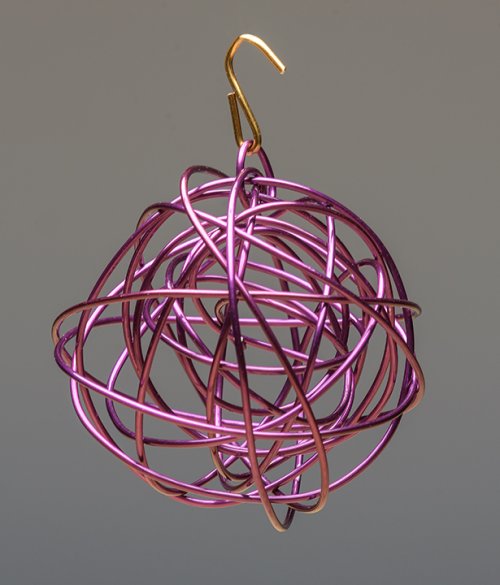
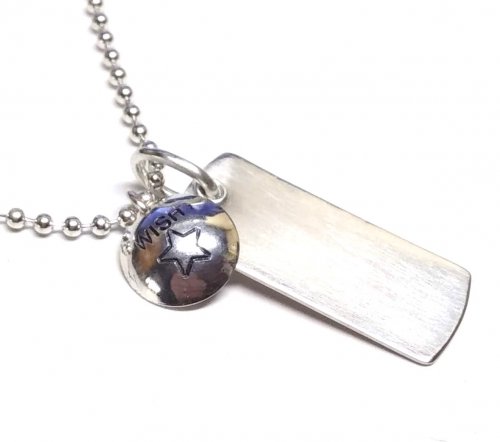
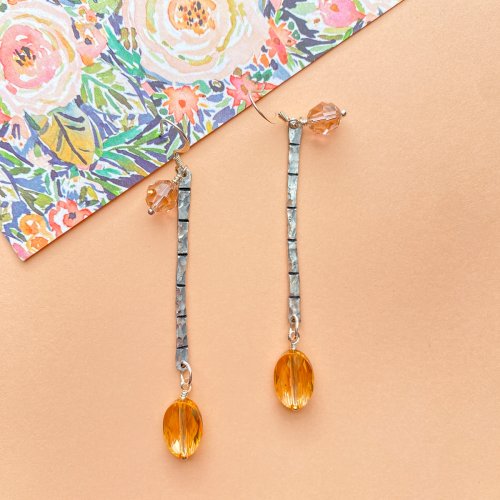



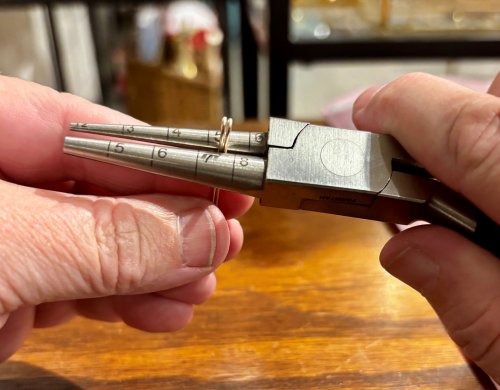

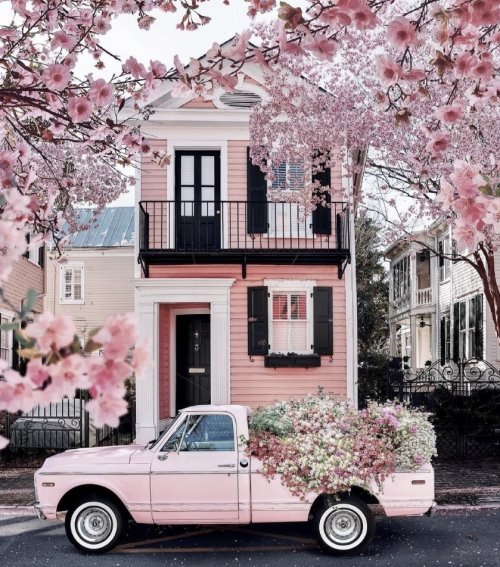


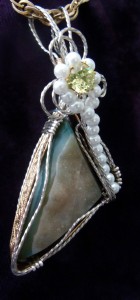

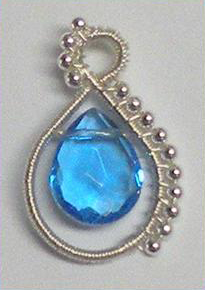 Beaded Briolette Pendant
Beaded Briolette Pendant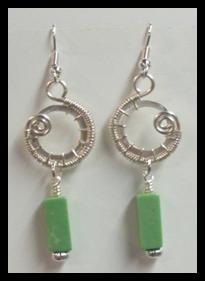 Snail Trail Spiral Earrings
Snail Trail Spiral Earrings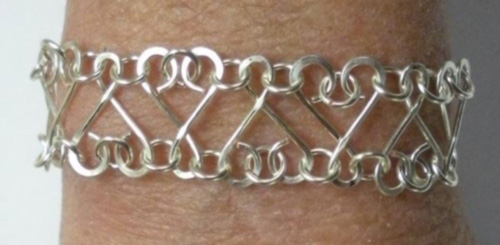 Heart Link Bracelet and Earrings
Heart Link Bracelet and Earrings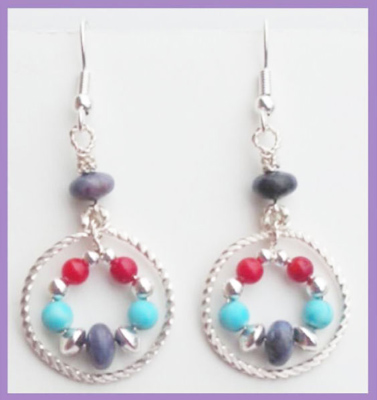 Crazy Hoop Earrings
Crazy Hoop Earrings Double Delight Jade Bracelet
Double Delight Jade Bracelet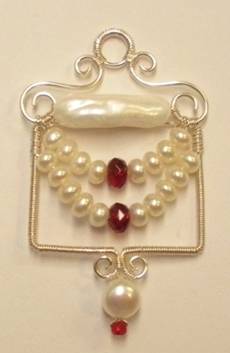 Swagged Pearl Pendant
Swagged Pearl Pendant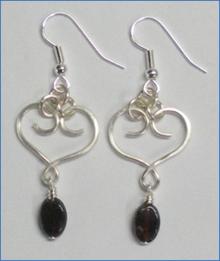 Heart Earrings with Drops
Heart Earrings with Drops Scarab Bracelet
Scarab Bracelet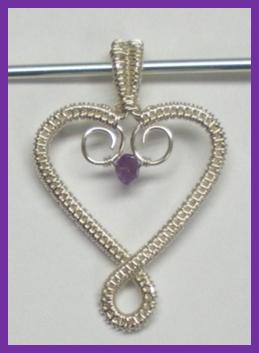 Birthstone Heart Pendant
Birthstone Heart Pendant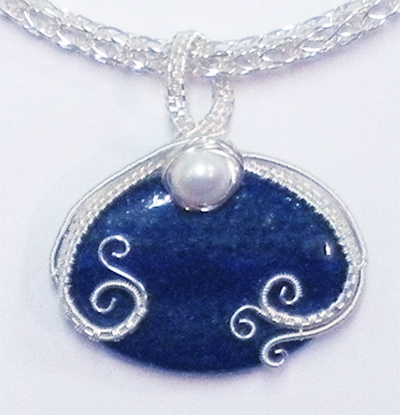 Pearl of the Sea Woven Pendant
Pearl of the Sea Woven Pendant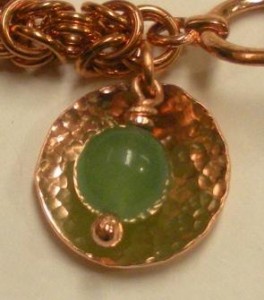 Bead Charm
Bead Charm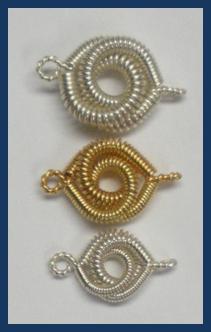 Coiled Rosette Link
Coiled Rosette Link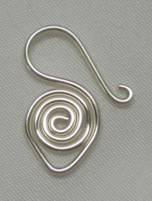 Wire Jewelry Component and Swan Hook
Wire Jewelry Component and Swan Hook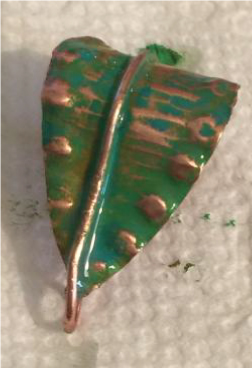 Leaf Bail
Leaf Bail 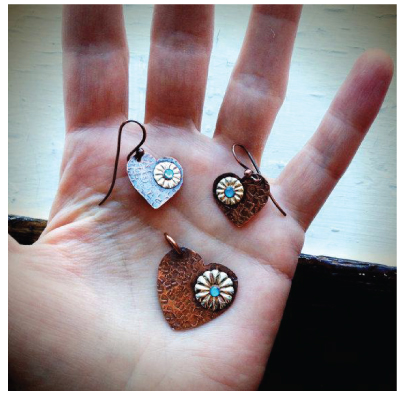 Component Templates with Heart Earrings and Pendant
Component Templates with Heart Earrings and Pendant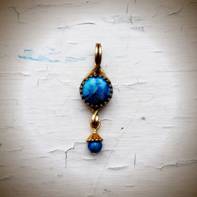 Ring Pendant
Ring Pendant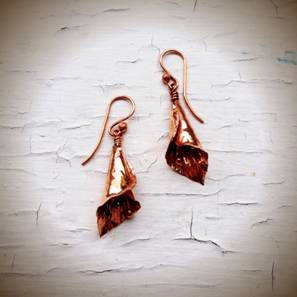 Calla Lily Earrings
Calla Lily Earrings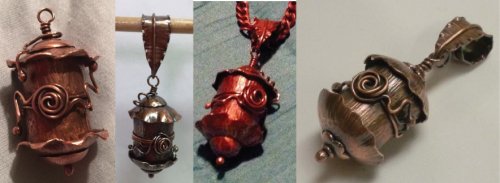 Birdhouse Pendant
Birdhouse Pendant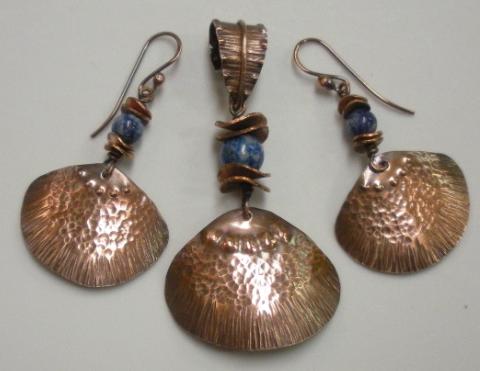 Clamshell Earrings and Pendant
Clamshell Earrings and Pendant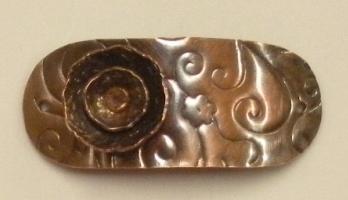 Bracelet Component
Bracelet Component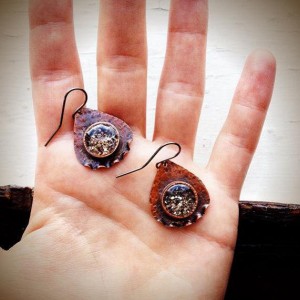 Teardrop Earrings and Pendant
Teardrop Earrings and Pendant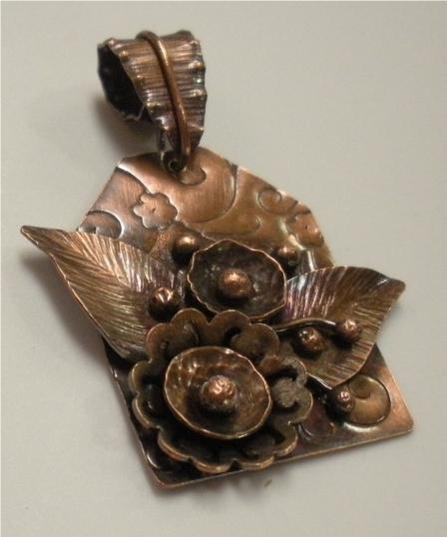 Tab Style Pendant
Tab Style Pendant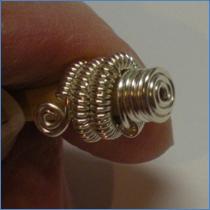 Coiled End Caps
Coiled End Caps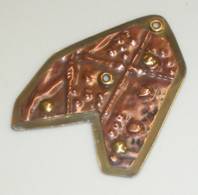 Freeform Pendant
Freeform Pendant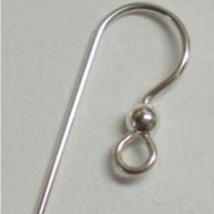 French Hook Ear Wires
French Hook Ear Wires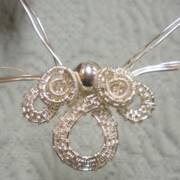 Necklace Component
Necklace Component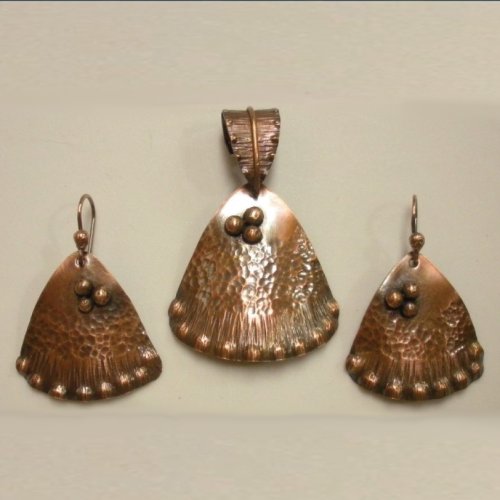 Triangle Shield Earrings, Pendant and Bail
Triangle Shield Earrings, Pendant and Bail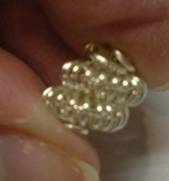 How to Make a Wire Coil and Bead
How to Make a Wire Coil and Bead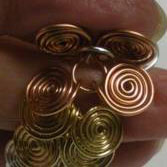 Egyptian Coil Bracelet
Egyptian Coil Bracelet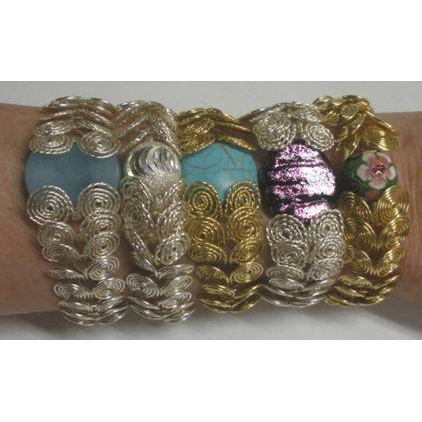 Focal Bead Egyptian Coiled Bracelet
Focal Bead Egyptian Coiled Bracelet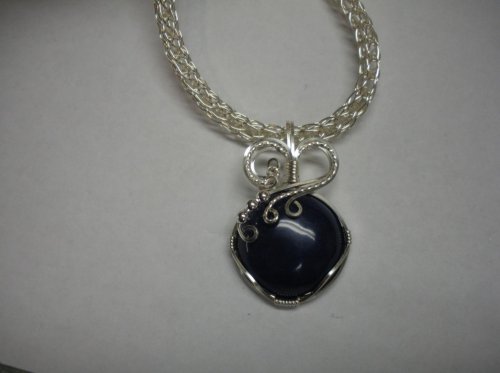 Sweetheart Round Cabochon Pendant
Sweetheart Round Cabochon Pendant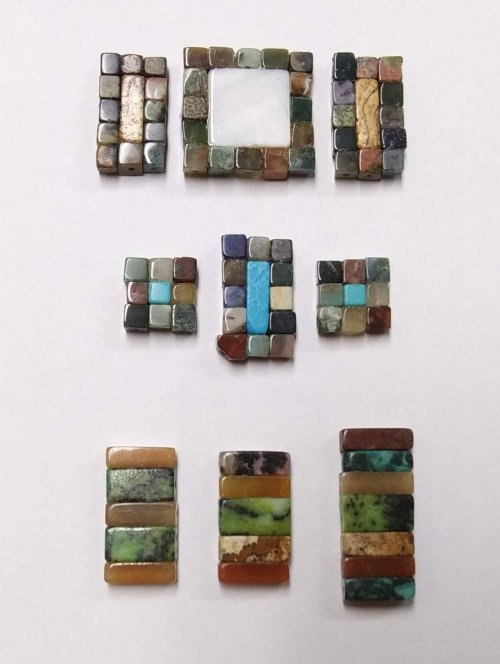 Making Cobblestone Cabochons
Making Cobblestone Cabochons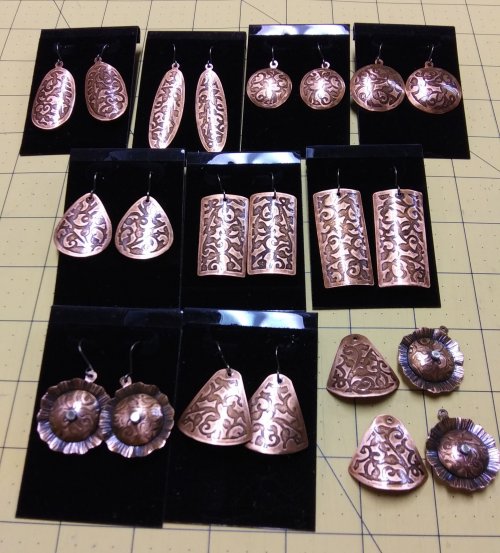 Cupcake Wrapper Earrings
Cupcake Wrapper Earrings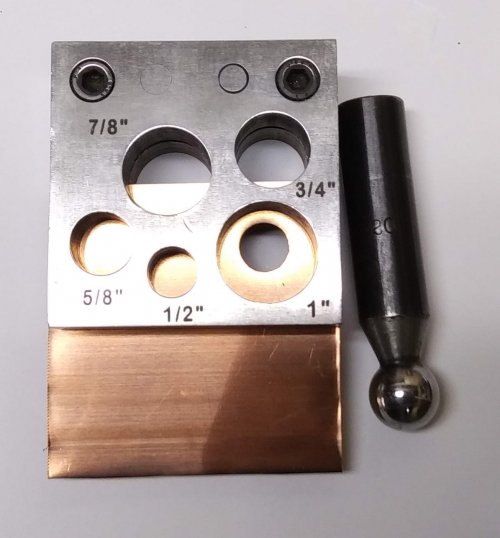 How to Make Metal Washers
How to Make Metal Washers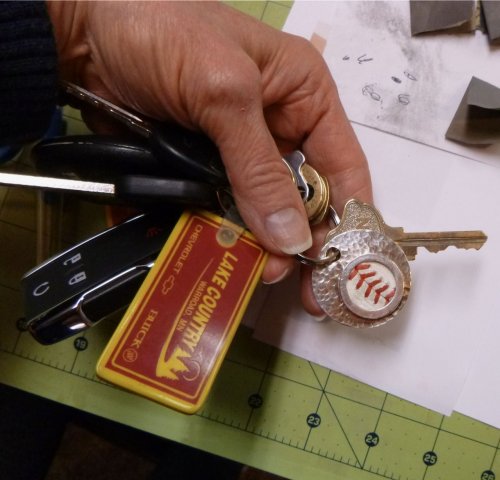 Baseball Skin Keychain
Baseball Skin Keychain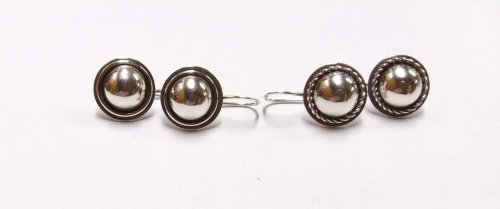 Pat's Silver Domed Earrings
Pat's Silver Domed Earrings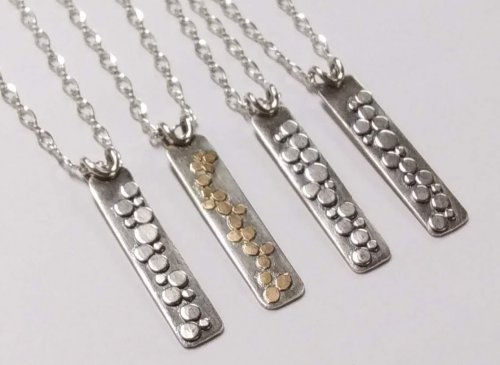 Blaze Your Own Path Pendant
Blaze Your Own Path Pendant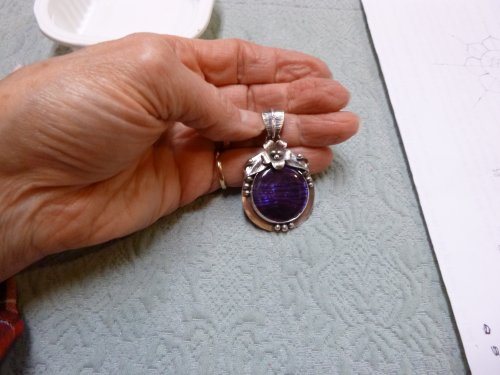 Semi Snap-on Bail
Semi Snap-on Bail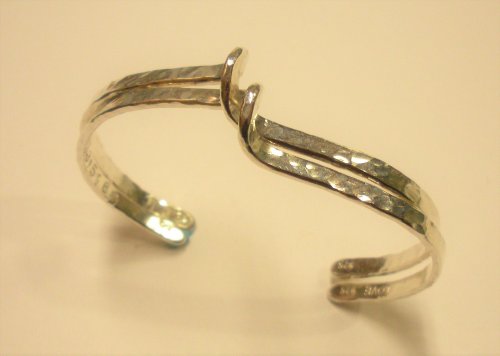 Interlocking Faux Twist Wire Bracelet
Interlocking Faux Twist Wire Bracelet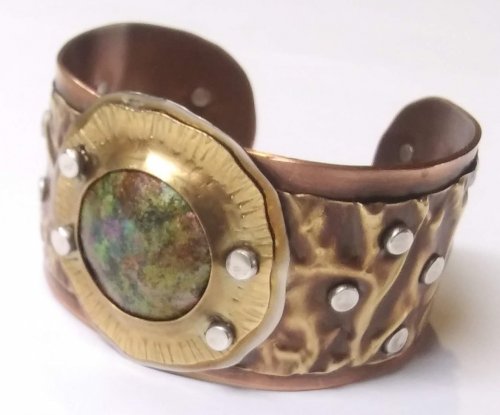 Fold Formed Cuff With Faux Roman Glass or Coin Cabochon
Fold Formed Cuff With Faux Roman Glass or Coin Cabochon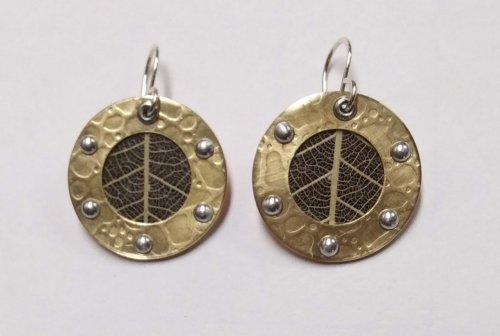 Steampunk Style Leaf Earrings
Steampunk Style Leaf Earrings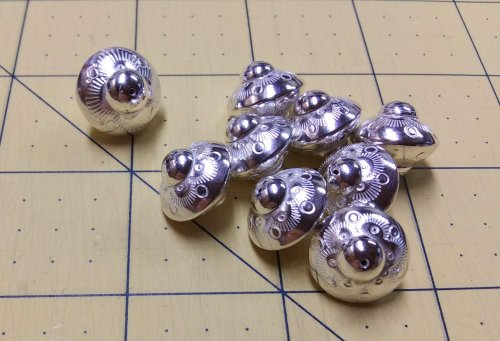 Stamped Saucer Beads
Stamped Saucer Beads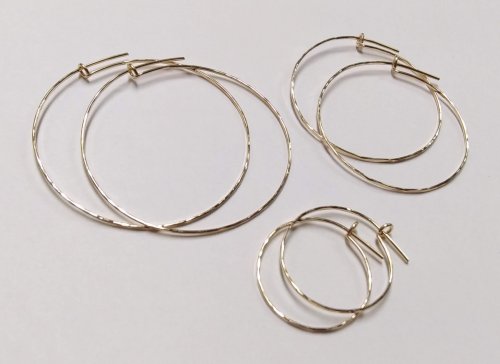 Kat's Wire Hoop Earrings
Kat's Wire Hoop Earrings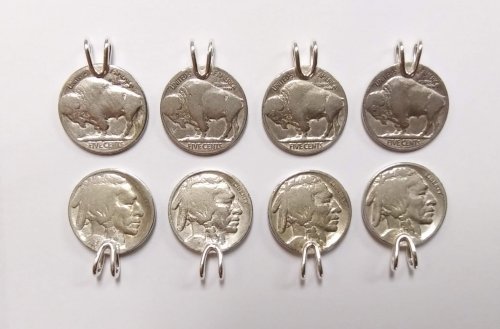 Simple Bail on a Coin Pendant
Simple Bail on a Coin Pendant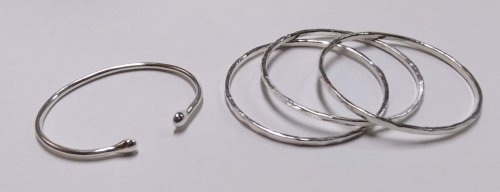 Wire Bangles
Wire Bangles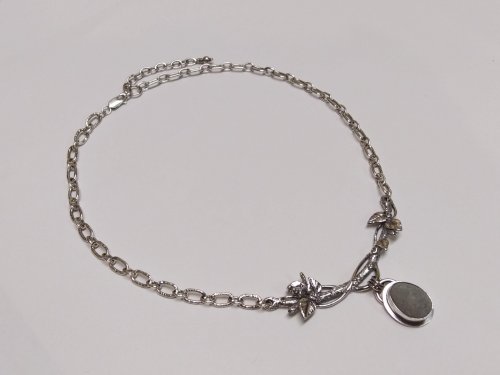 Jen's Chain
Jen's Chain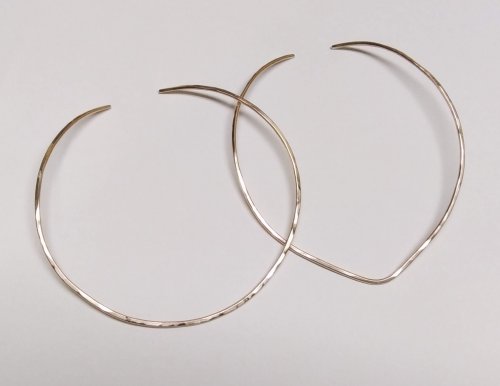 Making Neckwires
Making Neckwires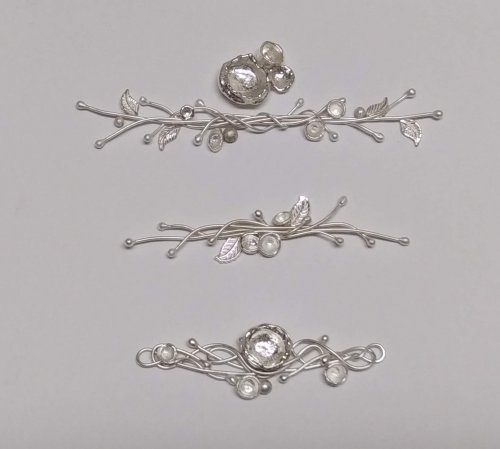 Silver Scrap Wire Focals to Embellish
Silver Scrap Wire Focals to Embellish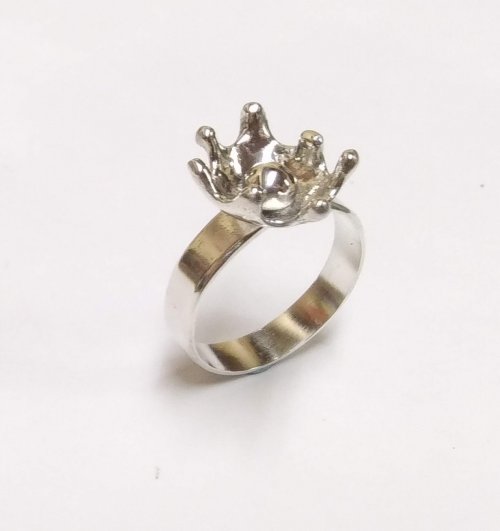 Splash Ring
Splash Ring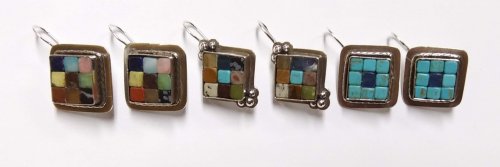 Cobblestone Cab Earrings
Cobblestone Cab Earrings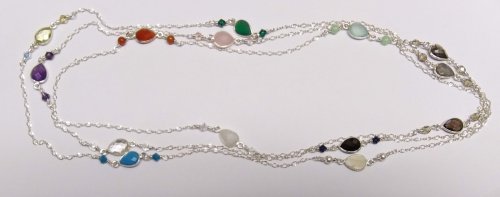 Multi Gemstone Necklace
Multi Gemstone Necklace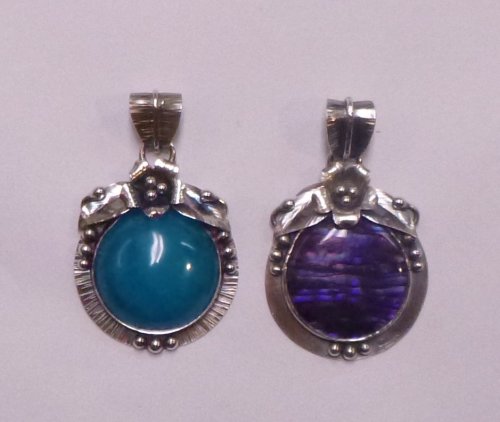 Southwest Style Pendant
Southwest Style Pendant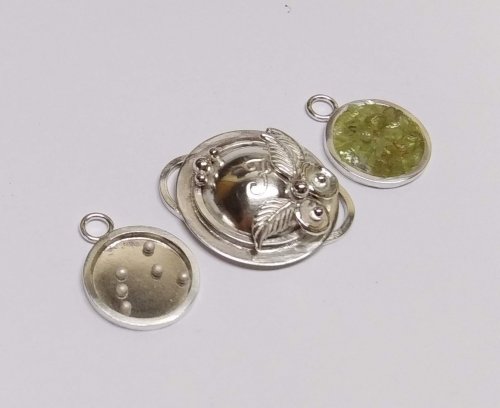 Bezels Using Square Wire
Bezels Using Square Wire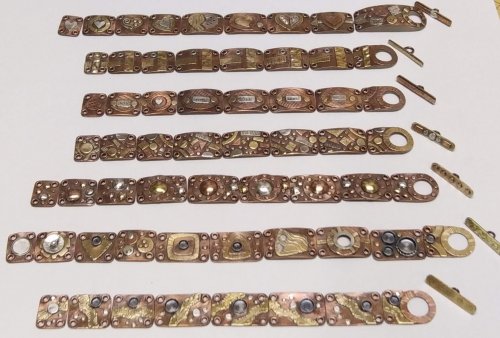 Mixed Metal Sampler Bracelet 1
Mixed Metal Sampler Bracelet 1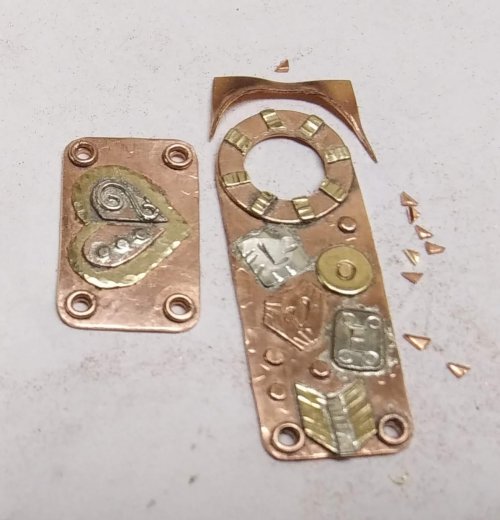 Mixed Metal Sampler Bracelet 2
Mixed Metal Sampler Bracelet 2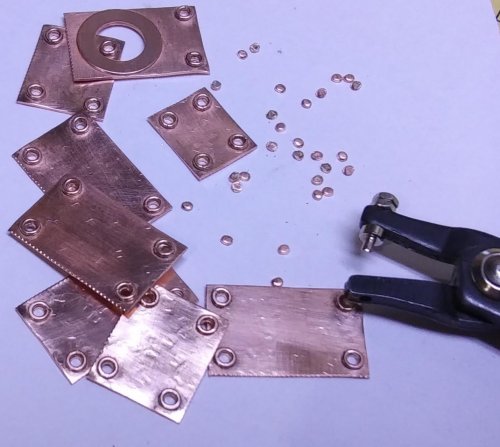 Mixed Metal Sampler Bracelet 3
Mixed Metal Sampler Bracelet 3 Mixed Metal Sampler Bracelet 4 - Words Matter
Mixed Metal Sampler Bracelet 4 - Words Matter Mixed Metal Sampler Bracelet 5 - River Walk
Mixed Metal Sampler Bracelet 5 - River Walk  Mixed Metal Sampler Bracelet 6 - A Little Bling
Mixed Metal Sampler Bracelet 6 - A Little Bling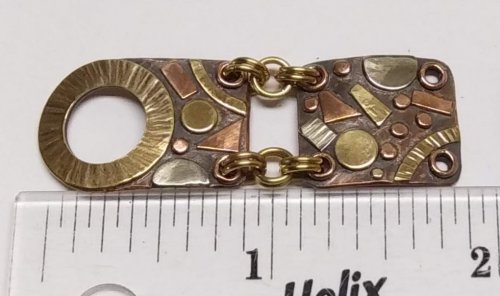 Mixed Metal Sampler Bracelets Series PUTTING IT ALL TOGETHER
Mixed Metal Sampler Bracelets Series PUTTING IT ALL TOGETHER  Mixed Metal Sampler Bracelet 7 - Steampunk Space Oddity
Mixed Metal Sampler Bracelet 7 - Steampunk Space Oddity Mixed Metal Sampler Bracelet 8 - Fun Shapes
Mixed Metal Sampler Bracelet 8 - Fun Shapes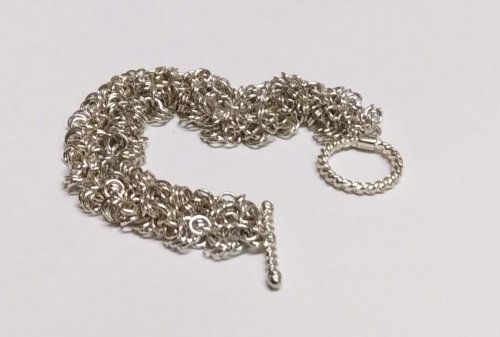 Jump Ring Fringe Bracelet
Jump Ring Fringe Bracelet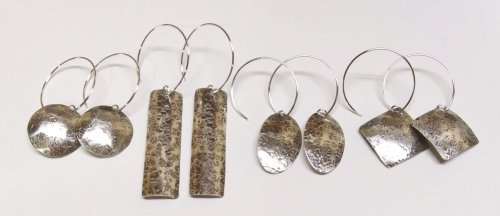 Easy Artisan Earrings
Easy Artisan Earrings Making Chain with Wubbers and Wire
Making Chain with Wubbers and Wire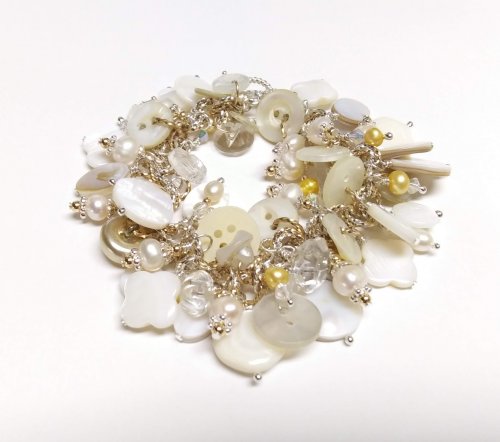 Heirloom Buttons and Beads Bracelet
Heirloom Buttons and Beads Bracelet  Tiny Silver Charms part 1
Tiny Silver Charms part 1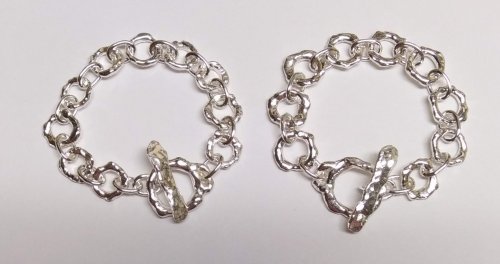 Argentium Silver Scrap Chain
Argentium Silver Scrap Chain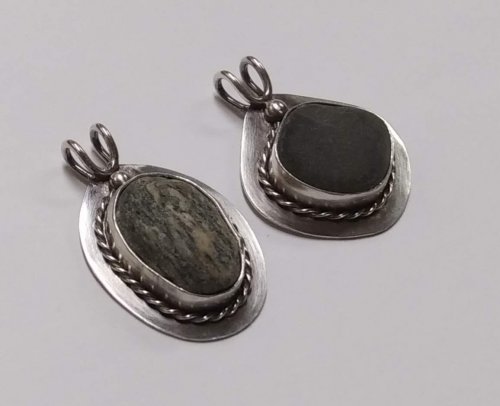 Sterling Lake Stone Pendant with Twisted Wire
Sterling Lake Stone Pendant with Twisted Wire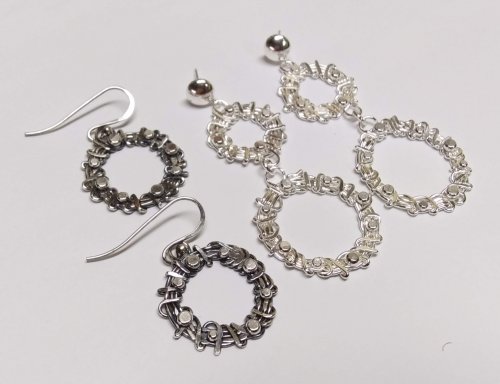 Smashing Drop Earrings
Smashing Drop Earrings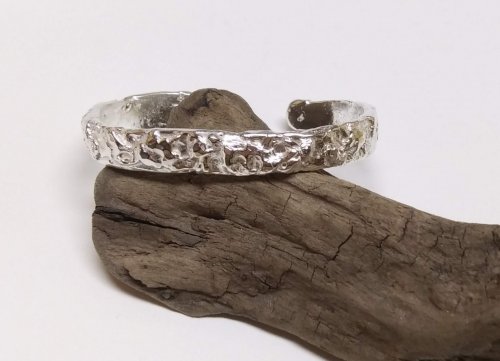 Argentium Silver Scrap Nugget Cuff
Argentium Silver Scrap Nugget Cuff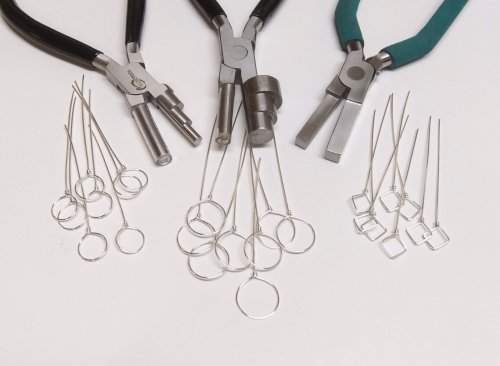 Finish Them Your Way Earrings
Finish Them Your Way Earrings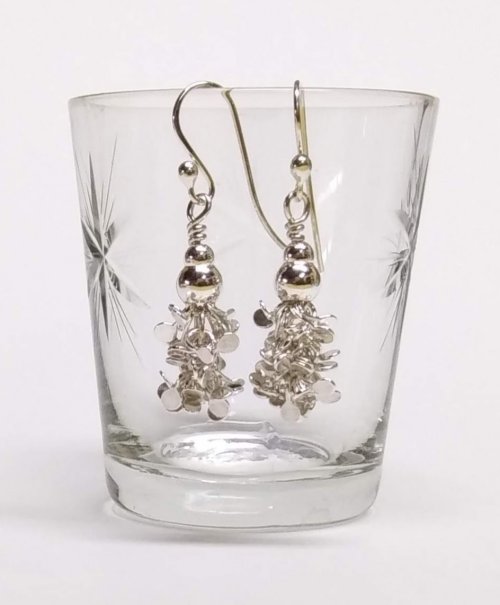 Paddle Fringe Earrings
Paddle Fringe Earrings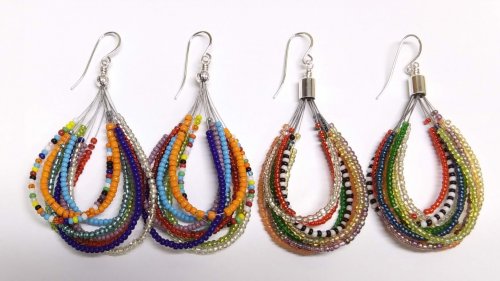 Seed Bead Earrings
Seed Bead Earrings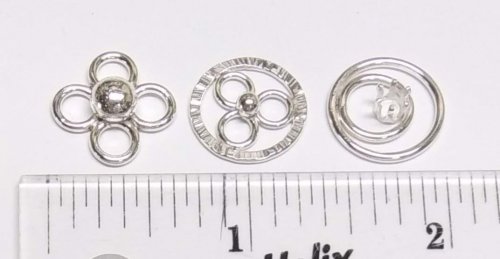 Bracelet Links 1, 2,3
Bracelet Links 1, 2,3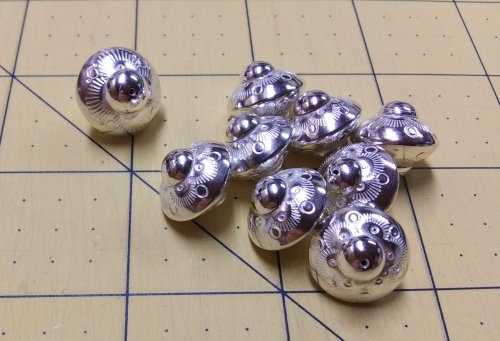 Stamped Saucer Beads
Stamped Saucer Beads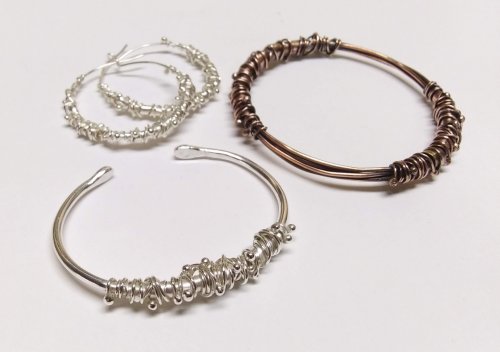 Chaos Scrap Wrap Jewelry
Chaos Scrap Wrap Jewelry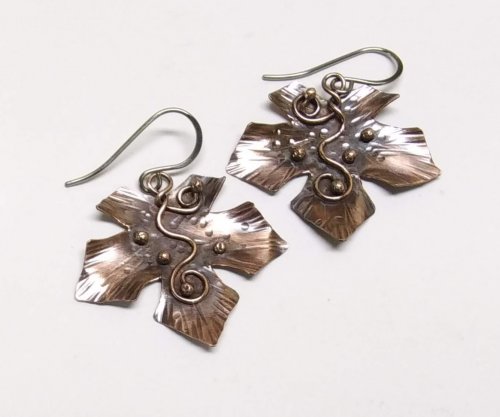 Maple Leaf Earrings
Maple Leaf Earrings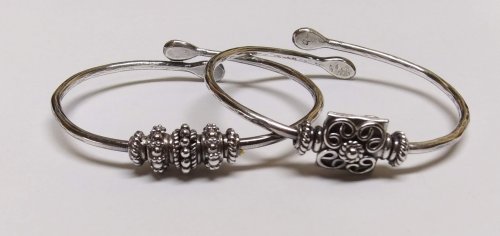 Child's Bracelet That Grows with Them
Child's Bracelet That Grows with Them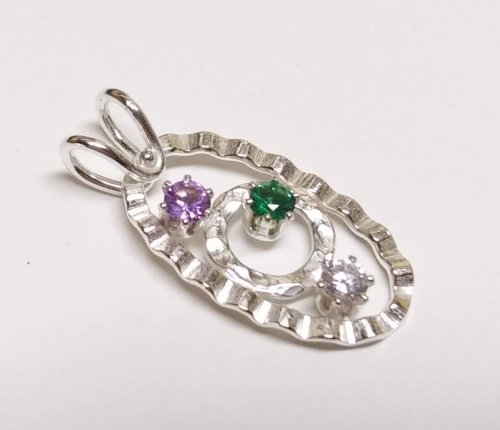 Mike's Surpirise Claire's Ripple Pendant
Mike's Surpirise Claire's Ripple Pendant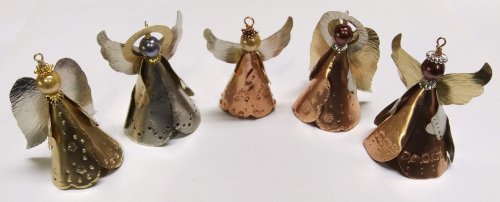 Angel Ornament
Angel Ornament 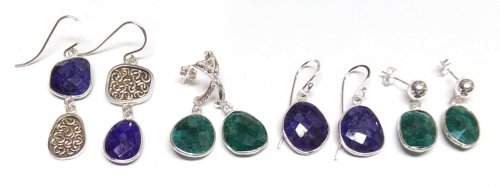 Diamonds, Emeralds, and Sapphires, Oh My.
Diamonds, Emeralds, and Sapphires, Oh My. 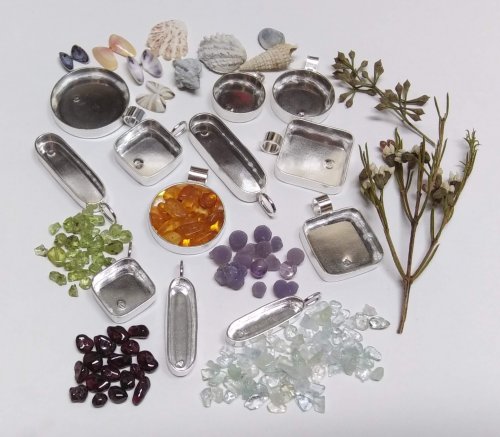 Treasure Bezel Cups
Treasure Bezel Cups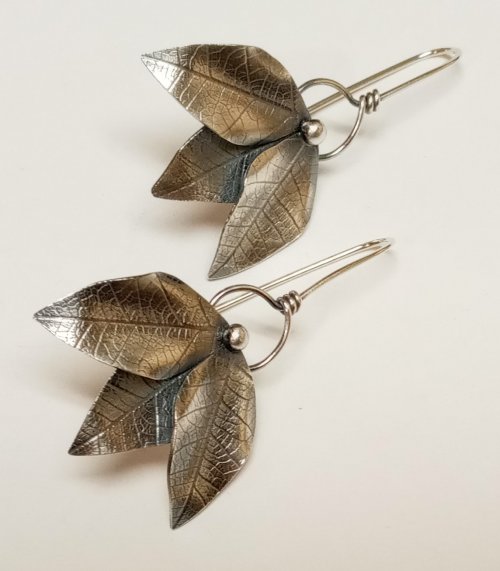 Three Leaves Earrings
Three Leaves Earrings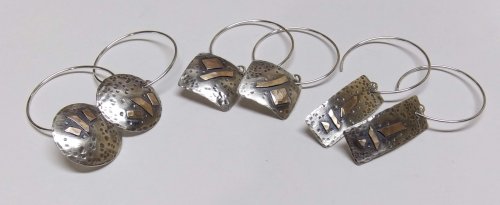 Silver and Gold Earrings
Silver and Gold Earrings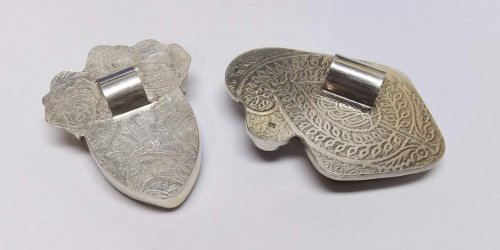 Make a Hidden Bail
Make a Hidden Bail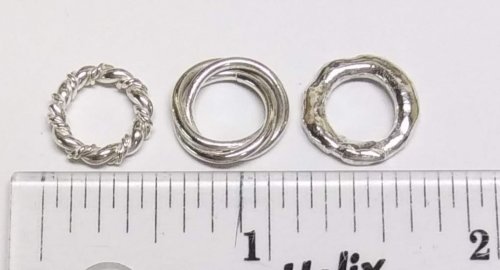 Wire Links 4, 5, 6
Wire Links 4, 5, 6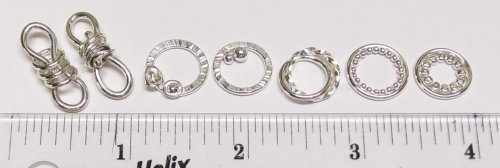 Wire Links 7, 8, 9, and 10
Wire Links 7, 8, 9, and 10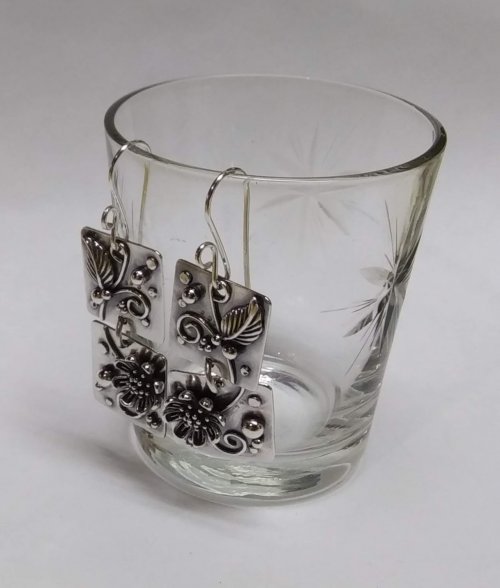 Double Loop Ear Wires
Double Loop Ear Wires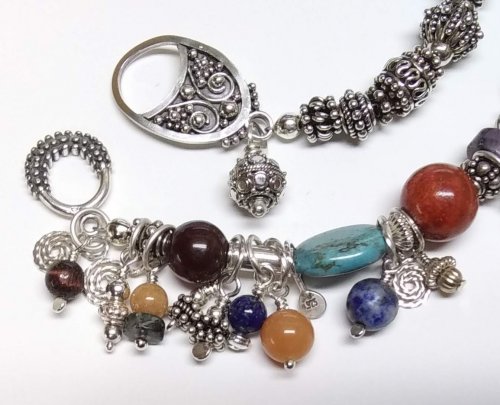 Balled and Paddled Head Pins
Balled and Paddled Head Pins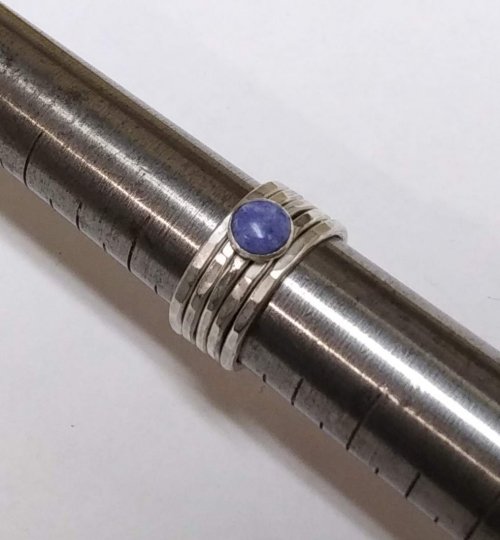 Textured Stacked Rings
Textured Stacked Rings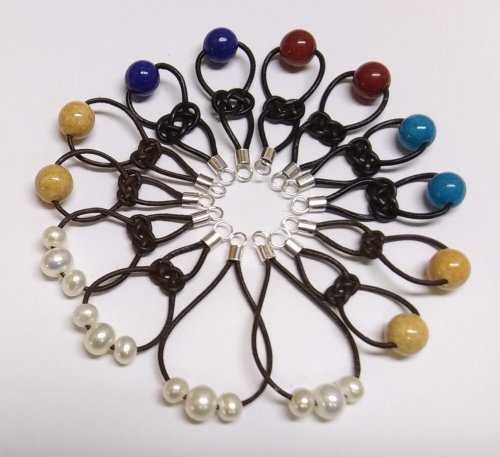 Cord and Bead Earrings
Cord and Bead Earrings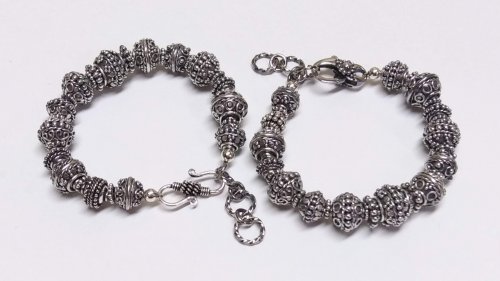 Bali Style Adjustable Closures
Bali Style Adjustable Closures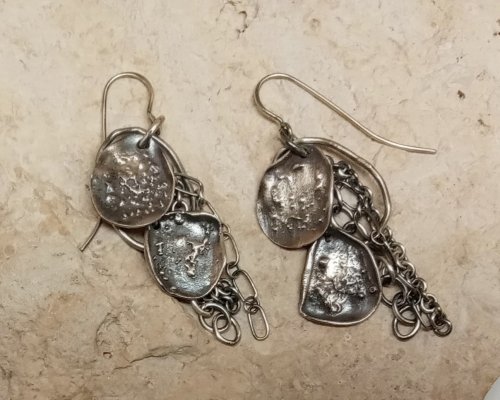 Organic Fused Silver Dust Earrings
Organic Fused Silver Dust Earrings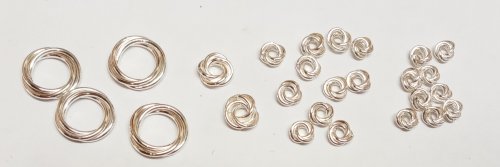 Mobius Rings
Mobius Rings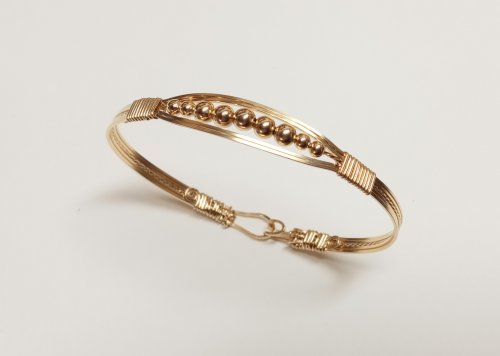 Dainty Bead and Wire Bangle with Hook Closure
Dainty Bead and Wire Bangle with Hook Closure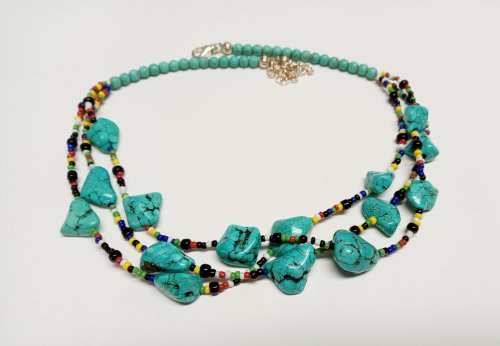 Seed Bead and Nugget Necklace
Seed Bead and Nugget Necklace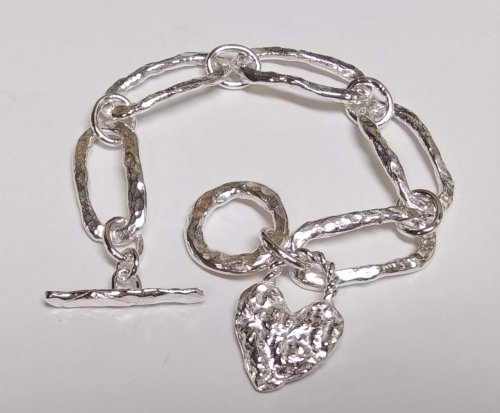 Love Locks Heart Charm
Love Locks Heart Charm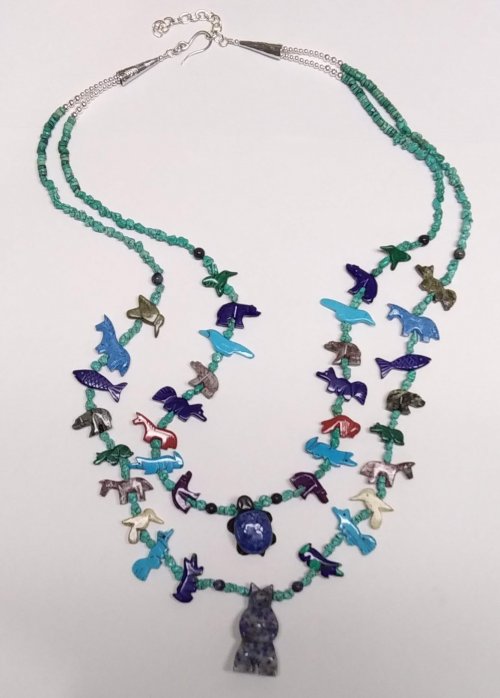 Traditional Southwest Style Hook Closures
Traditional Southwest Style Hook Closures 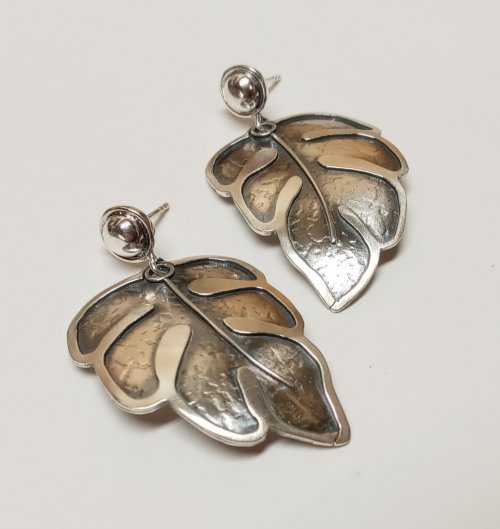 Negative Space Earrings
Negative Space Earrings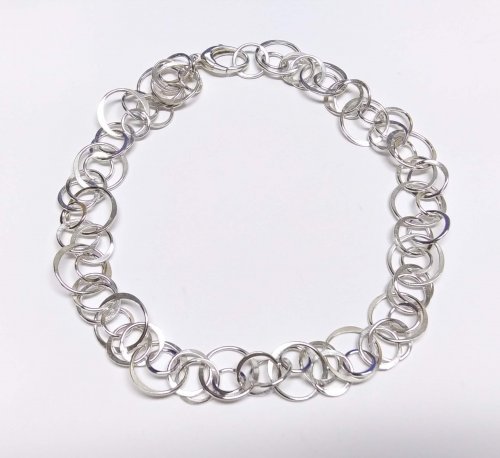 Jumbled Lacy Chain
Jumbled Lacy Chain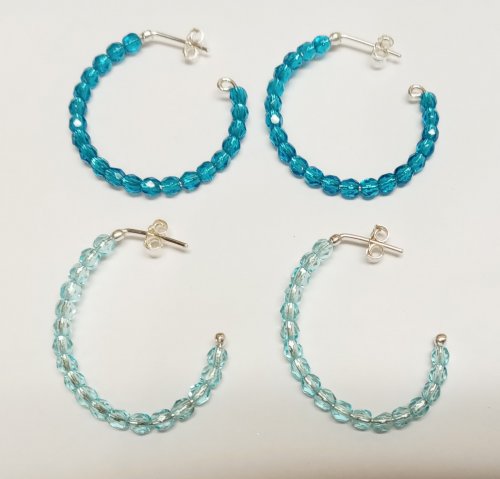 Easy Beaded Post Hoop Earrings
Easy Beaded Post Hoop Earrings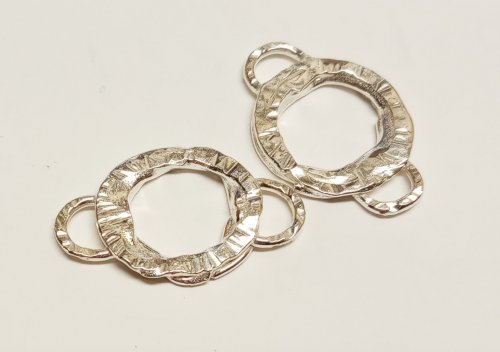 Rustic Silver Links
Rustic Silver Links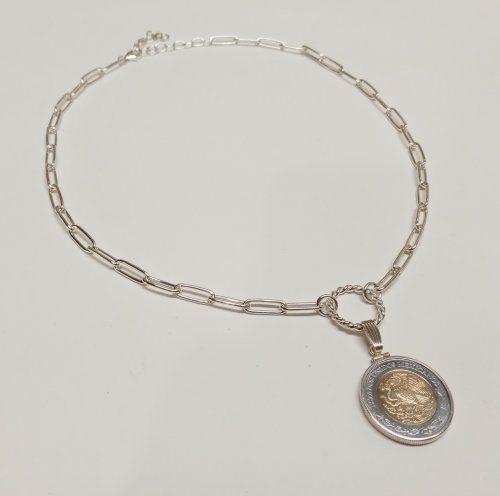 Make a Soldered Paperclip Chain
Make a Soldered Paperclip Chain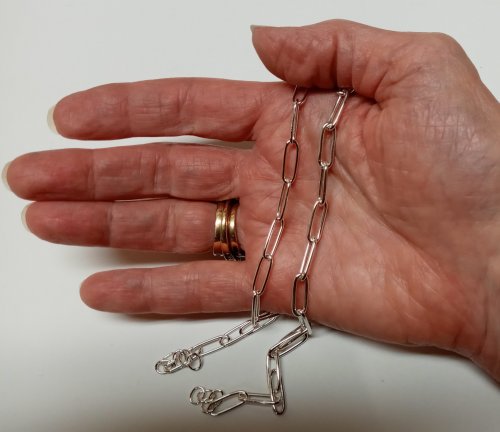 Make a Fused Paperclip Chain
Make a Fused Paperclip Chain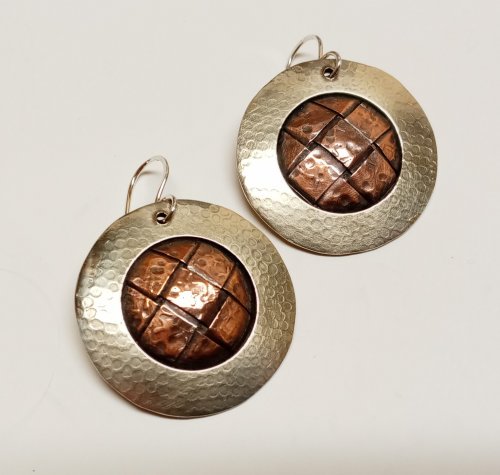 Make Woven Metal Strips to Use in Your Designs
Make Woven Metal Strips to Use in Your Designs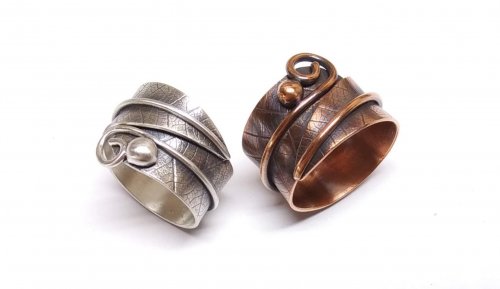 Leaf Wrap Metal Rings version 1
Leaf Wrap Metal Rings version 1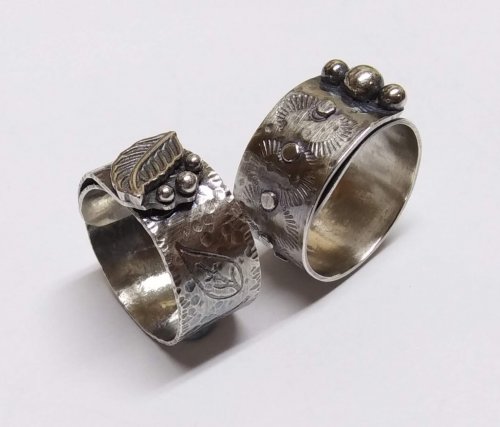 Leaf Wrap Metal Rings version 2
Leaf Wrap Metal Rings version 2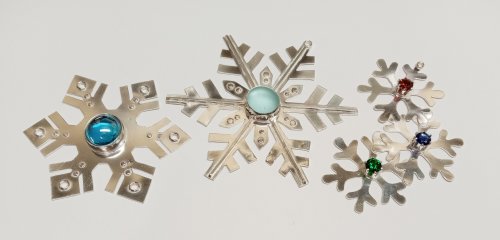 Snowflake Ornaments
Snowflake Ornaments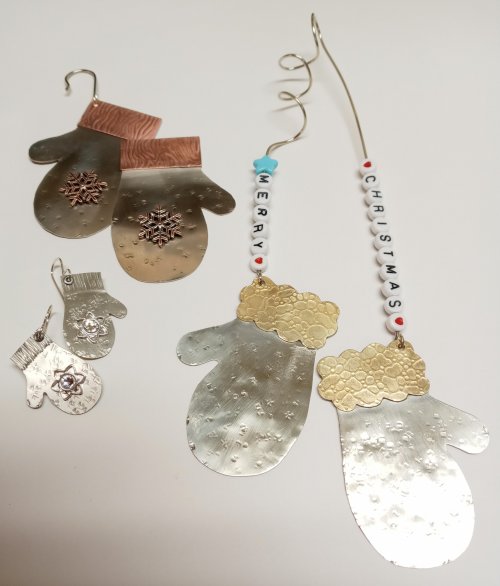 Mitten Ornament
Mitten Ornament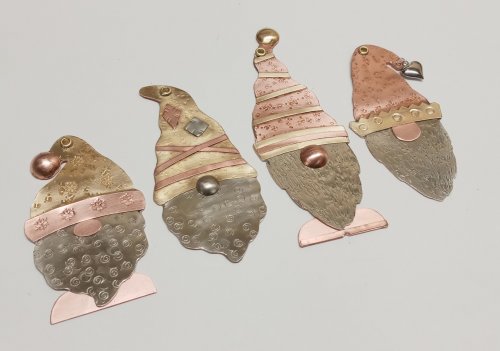 Gnome Ornaments
Gnome Ornaments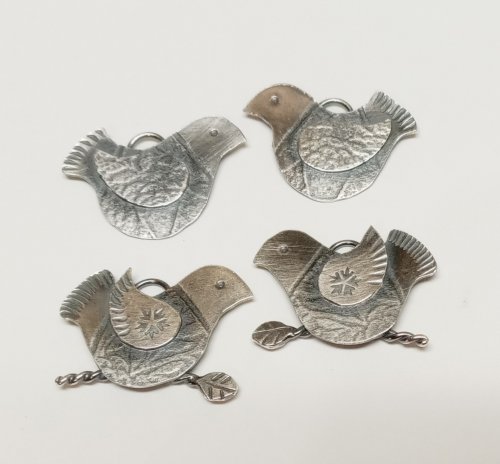 A Partridge in a Pear Tree Earrings
A Partridge in a Pear Tree Earrings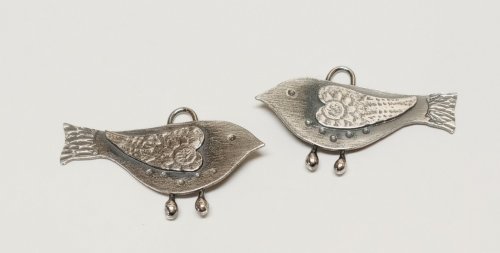 Two Turtle Doves Earrings
Two Turtle Doves Earrings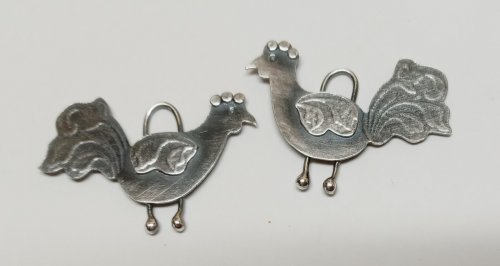 Three French Hens Earrings
Three French Hens Earrings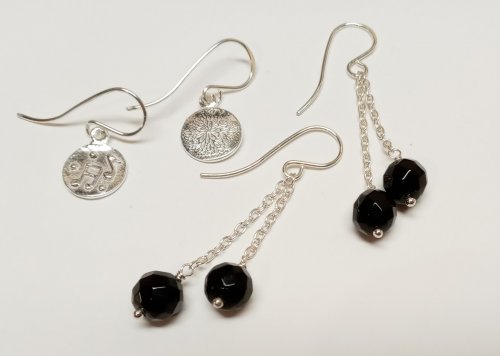 Four Calling Birds Earrings
Four Calling Birds Earrings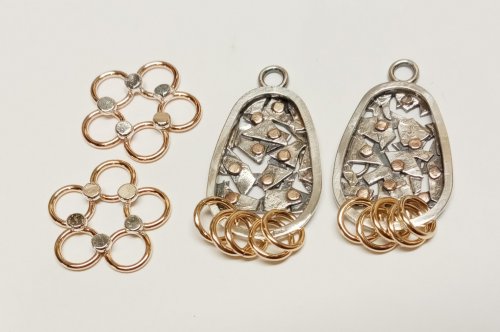 Five Golden Rings Earrings
Five Golden Rings Earrings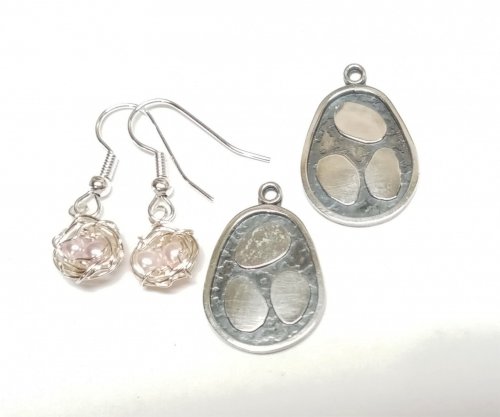 Six Geese a Layin' Earrings
Six Geese a Layin' Earrings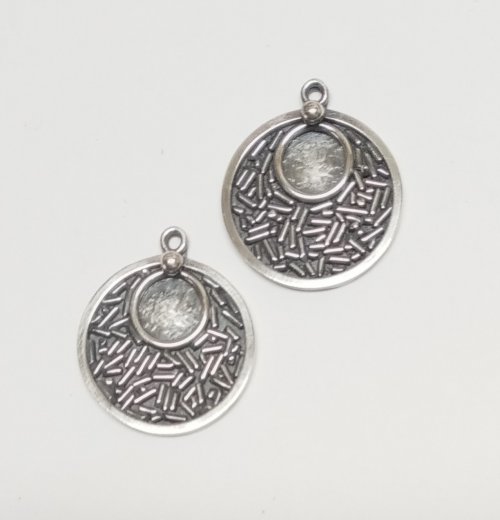 Seven Swans a Swimming Earrings
Seven Swans a Swimming Earrings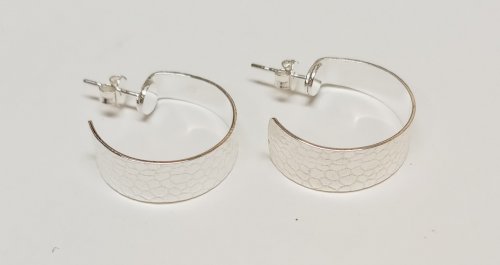 Eight Maids a Milking earrings
Eight Maids a Milking earrings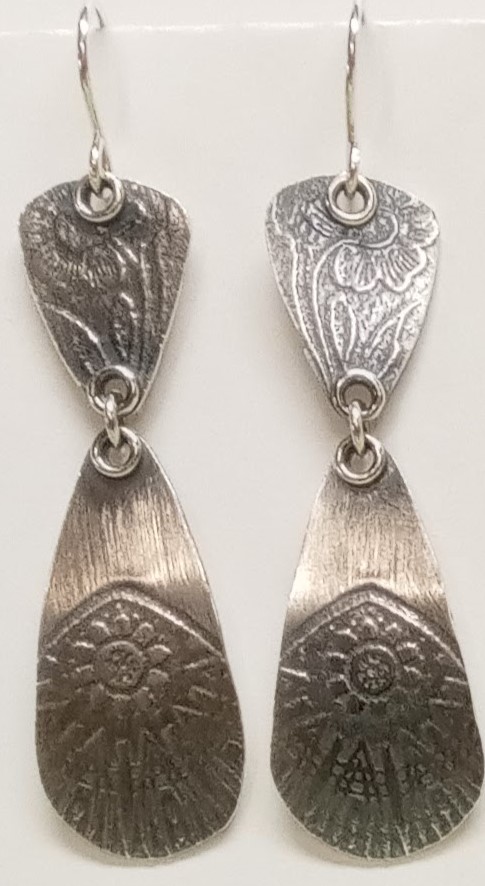 Nine Ladies Dancing Earrings
Nine Ladies Dancing Earrings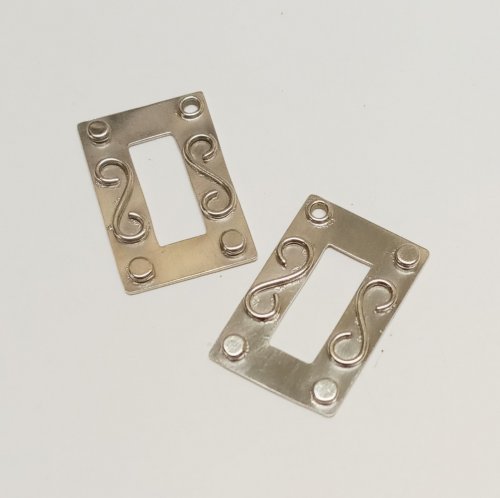 Ten Lords a Leaping Earrings
Ten Lords a Leaping Earrings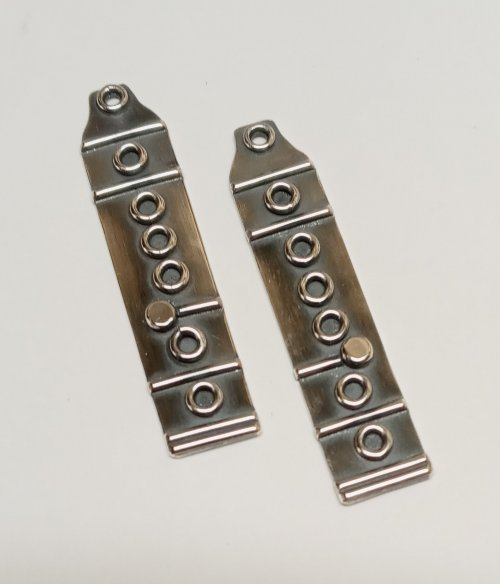 Eleven Pipers Piping Earrings
Eleven Pipers Piping Earrings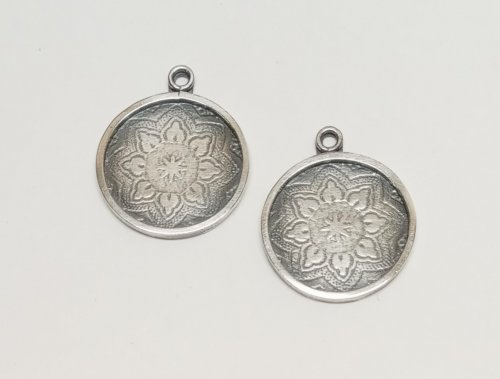 Twelve Drummers Drumming Earrings
Twelve Drummers Drumming Earrings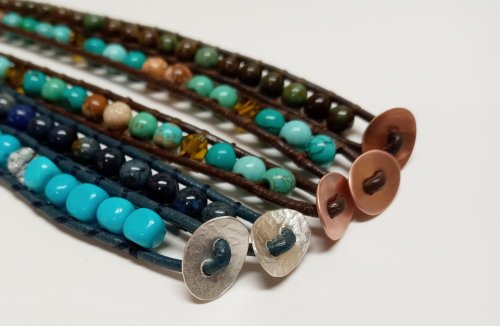 Make Your Own Bracelet Button Clasps
Make Your Own Bracelet Button Clasps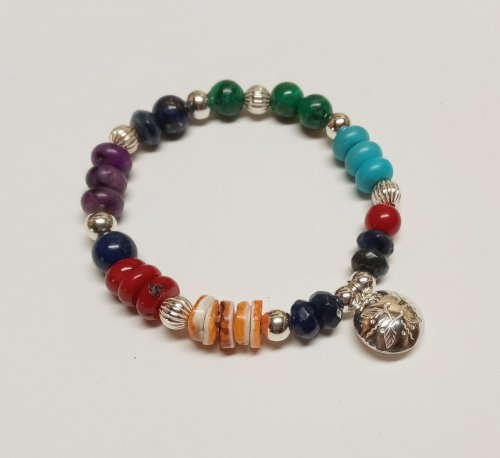 Little Saucer Bells
Little Saucer Bells Doodads - Fun Findings
Doodads - Fun Findings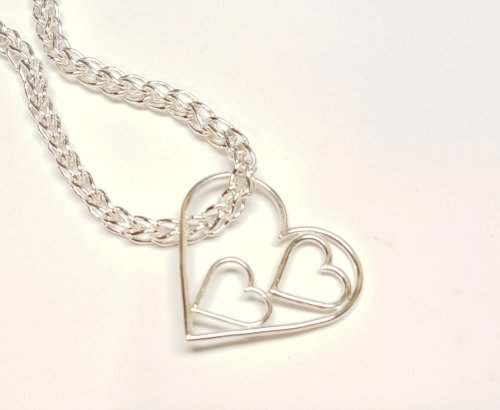 No Measure Hearts, Any Size, Any Gauge
No Measure Hearts, Any Size, Any Gauge 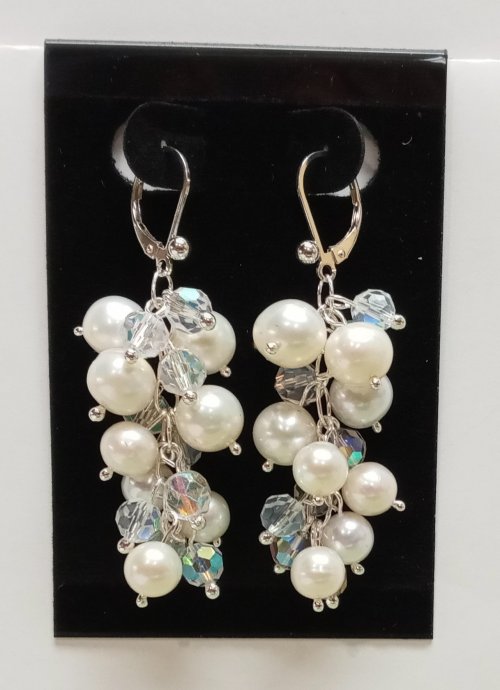 Cascading Drops Earrings
Cascading Drops Earrings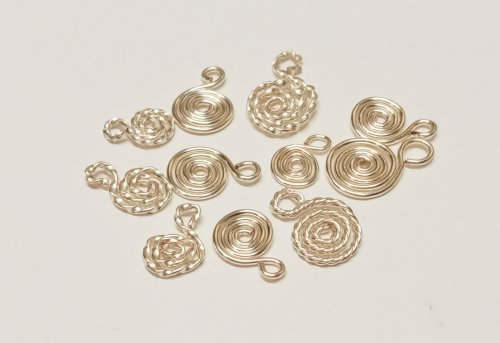 WIre Basics - Spiral Charms
WIre Basics - Spiral Charms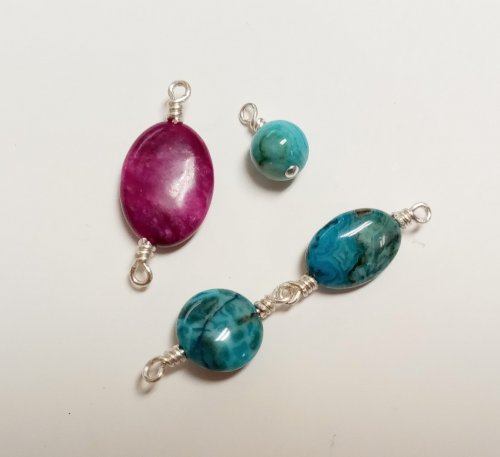 Wire Basics - Wrapped Loops and Links
Wire Basics - Wrapped Loops and Links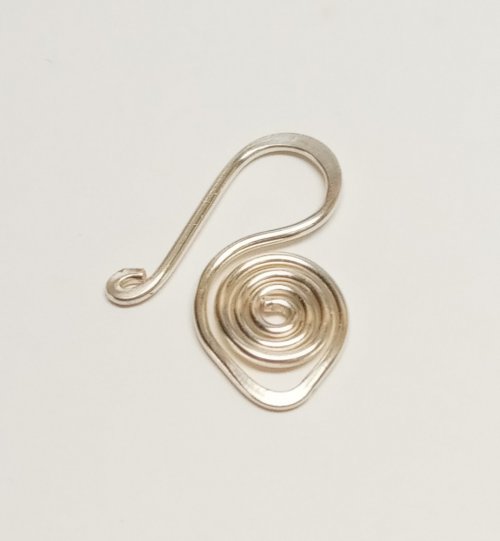 Wire Basics - Simple Swan Hook
Wire Basics - Simple Swan Hook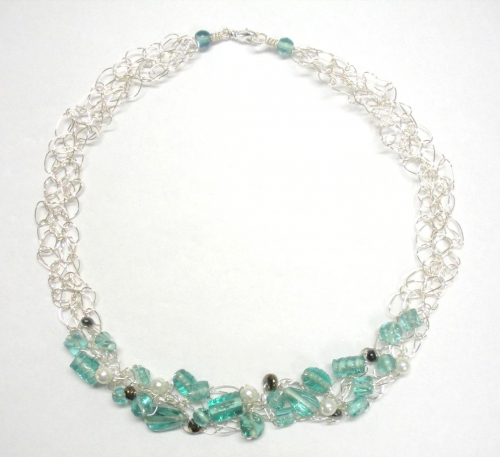 Wire Crocheted Necklace
Wire Crocheted Necklace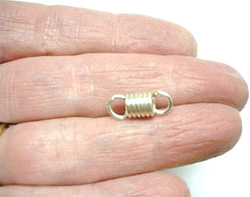 Wire Basics - Wire Garage Door Spring Link
Wire Basics - Wire Garage Door Spring Link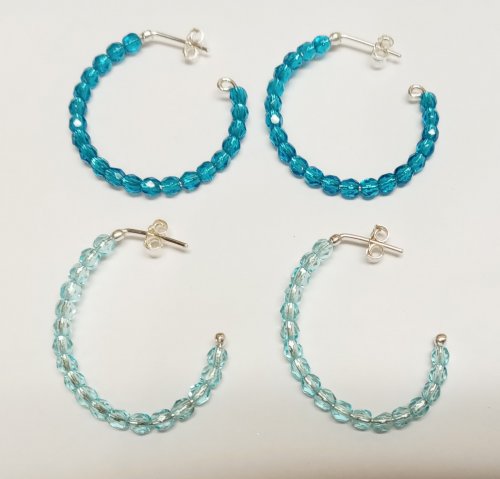 Easy Post Hoop Earrings
Easy Post Hoop Earrings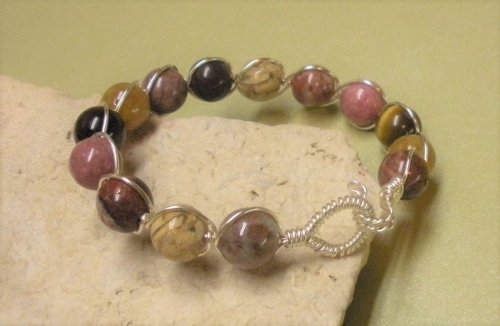 Double Wrap Wire Bangle Bracelet
Double Wrap Wire Bangle Bracelet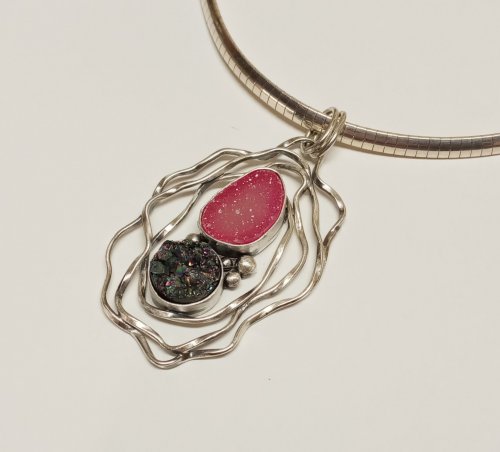 Organic Wire Pendant
Organic Wire Pendant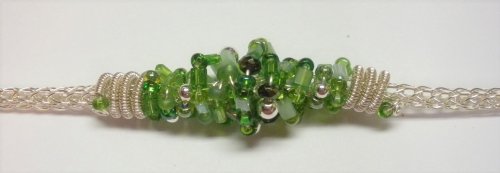 Coiled, Beaded Slide
Coiled, Beaded Slide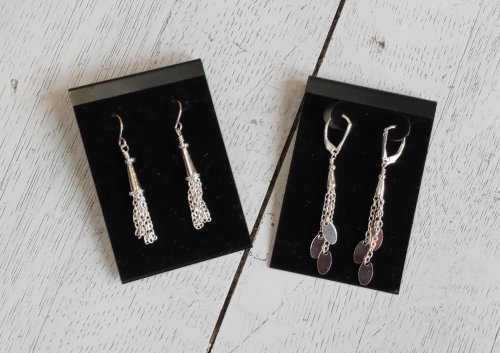 Cone and Chain Earrings
Cone and Chain Earrings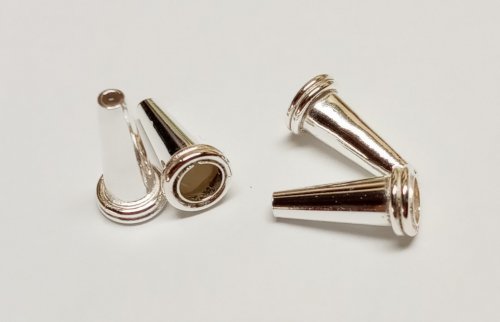 Embellished Sterling Cones
Embellished Sterling Cones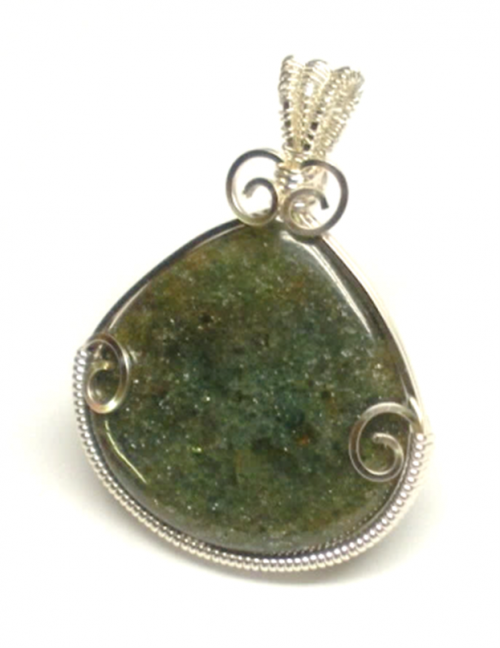 Classic Wire Wrap Bezelled Pendant
Classic Wire Wrap Bezelled Pendant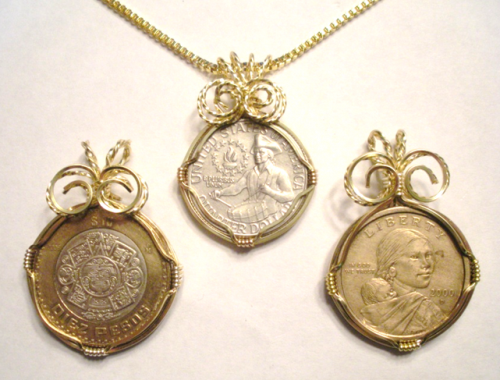 Wire Wrap a Coin
Wire Wrap a Coin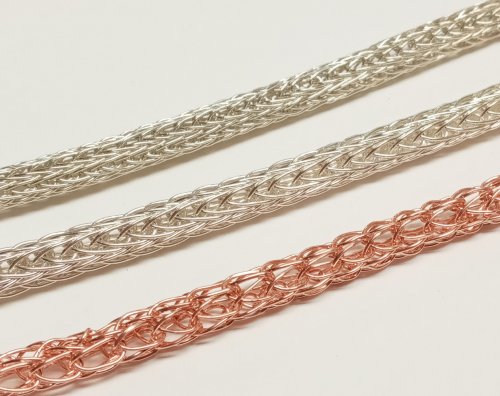 Viking Knit
Viking Knit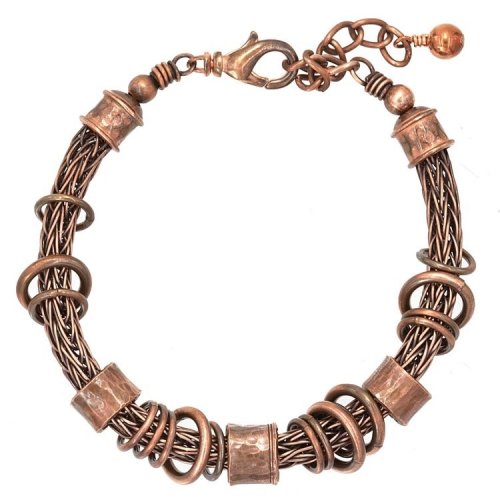 Viking Knit Bracelet
Viking Knit Bracelet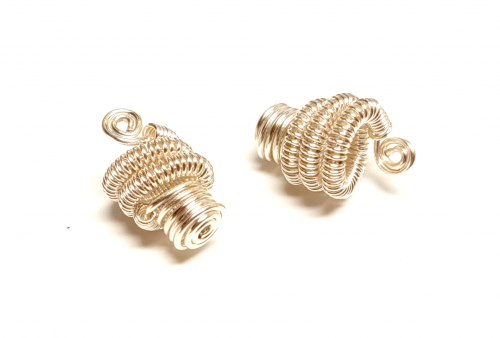 Coiled Wire End Caps
Coiled Wire End Caps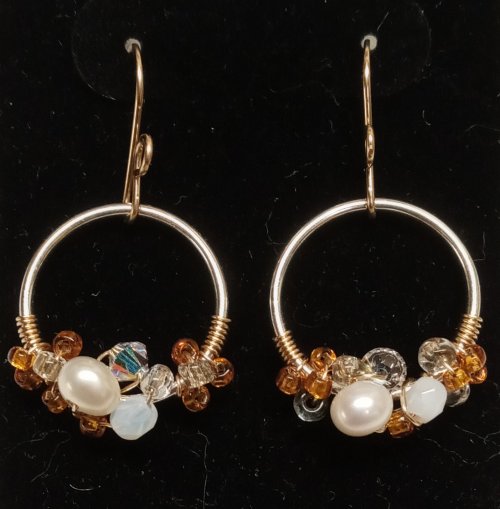 Bead-Wrapped Hoop Earrings
Bead-Wrapped Hoop Earrings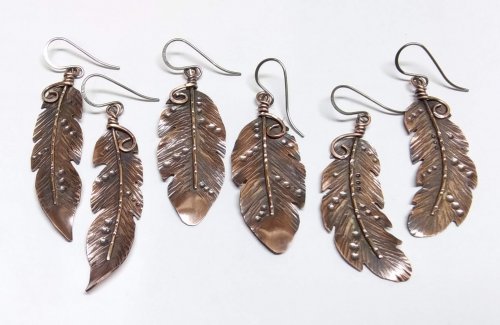 Copper Feather Earrings
Copper Feather Earrings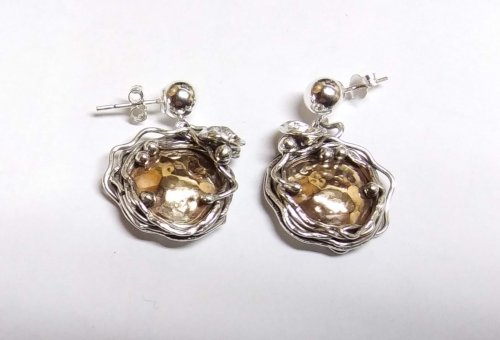 Soldering a Dome to a Backplate
Soldering a Dome to a Backplate 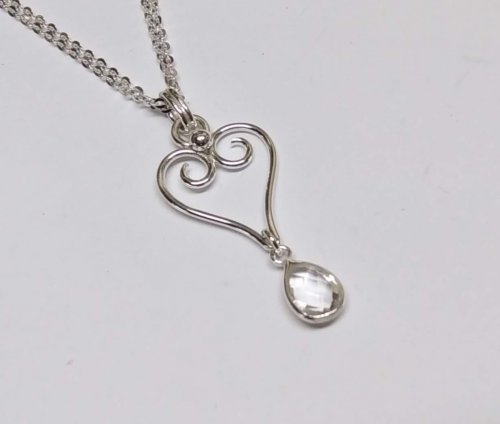 Wire Heart Pendant with Gemstone Drop
Wire Heart Pendant with Gemstone Drop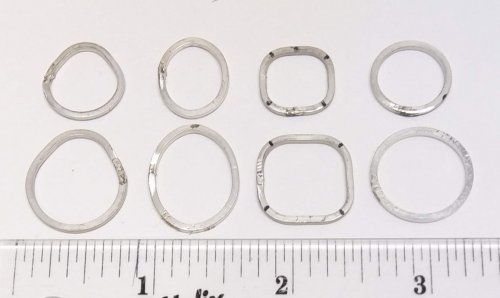 Make Basic Wire Shapes for Jewelry
Make Basic Wire Shapes for Jewelry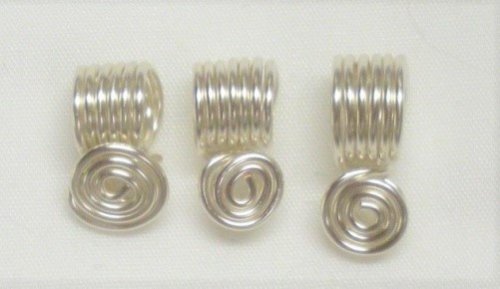 Make Simple Wire Slide Bails
Make Simple Wire Slide Bails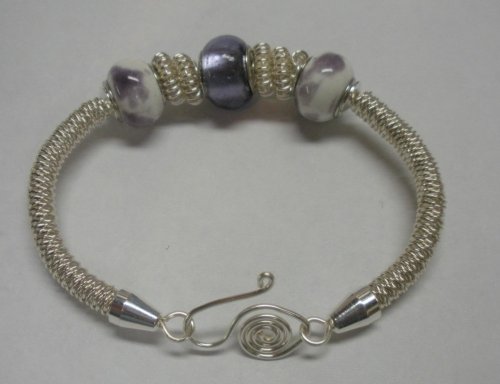 Coiled Bead and Twisted Wire Bracelet
Coiled Bead and Twisted Wire Bracelet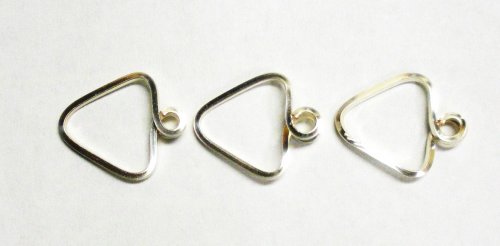 Wire Triangle Link
Wire Triangle Link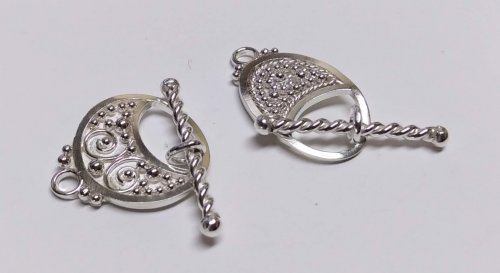 Bali Style Focal Toggle
Bali Style Focal Toggle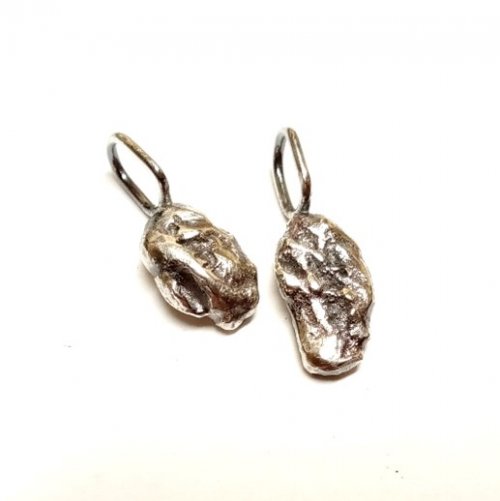 Silver Nuggets
Silver Nuggets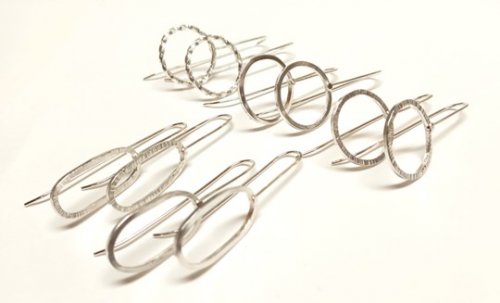 Fun Shapes Fish Hook Earrings
Fun Shapes Fish Hook Earrings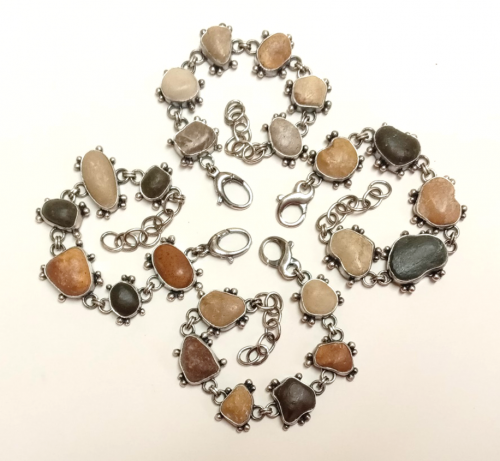 After the Rain Bracelets
After the Rain Bracelets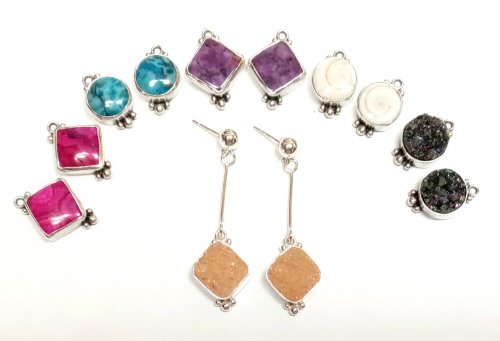 Dangling Drop Earrings
Dangling Drop Earrings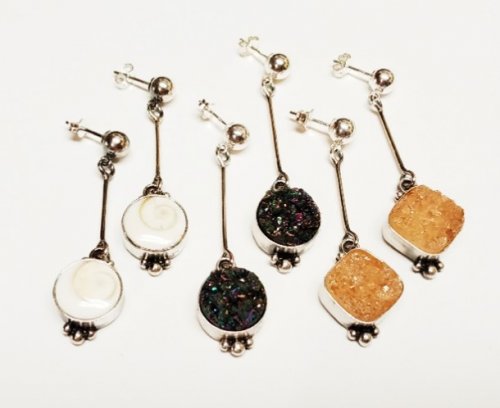 Dangling Chain Sticks
Dangling Chain Sticks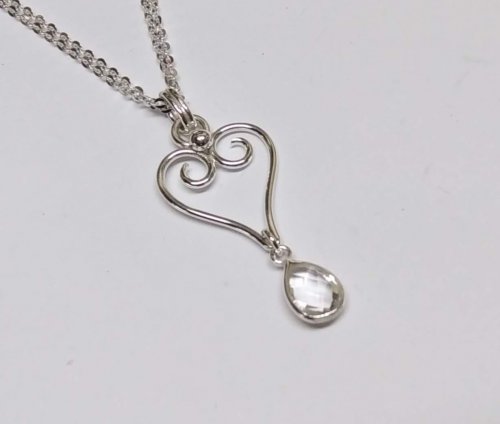 Wire Heart Pendant with Gemstone Drop
Wire Heart Pendant with Gemstone Drop 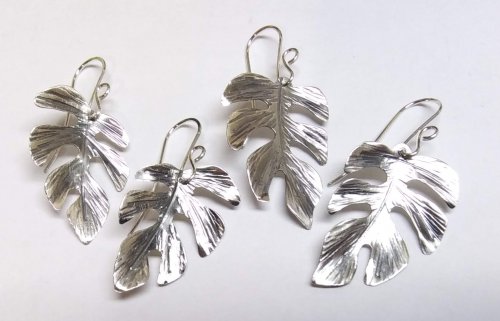 Tropical Leaf Earrings
Tropical Leaf Earrings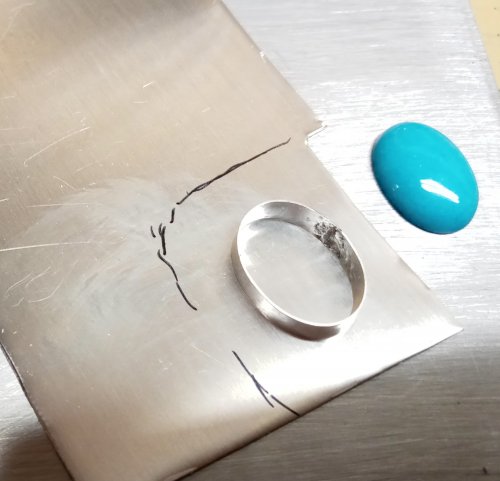 Basic Bezel Wire Tutorial
Basic Bezel Wire Tutorial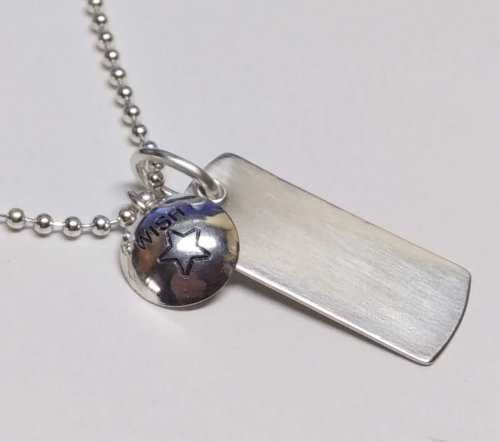 Dog Tag Style Necklace
Dog Tag Style Necklace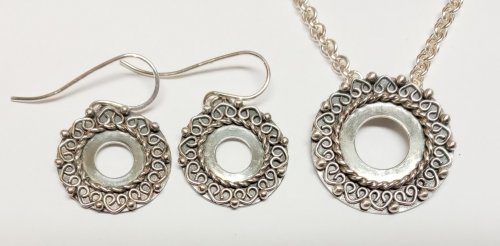 Lacy Washers
Lacy Washers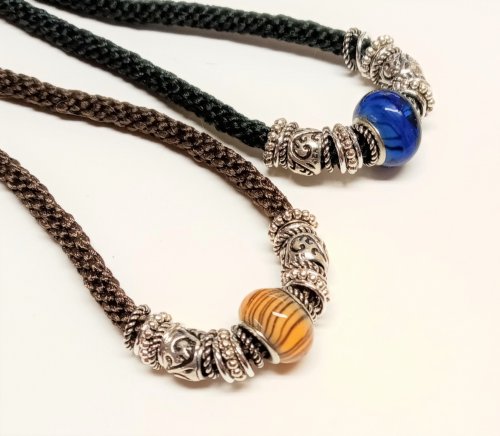 8-Strand Kumihimo
8-Strand Kumihimo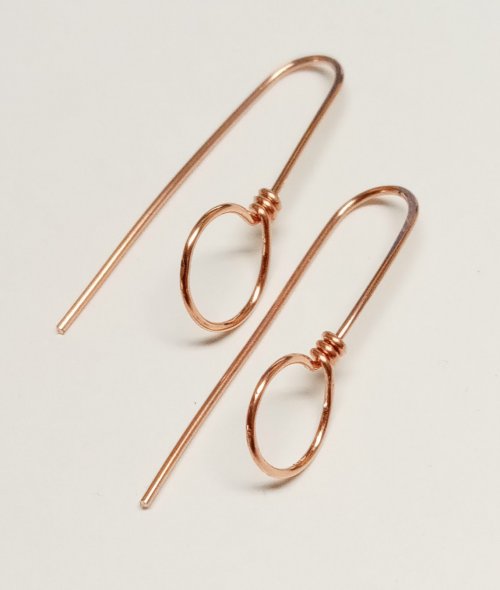 Closed Loop Ear Wires
Closed Loop Ear Wires Simple Strip Bails from Scratch
Simple Strip Bails from Scratch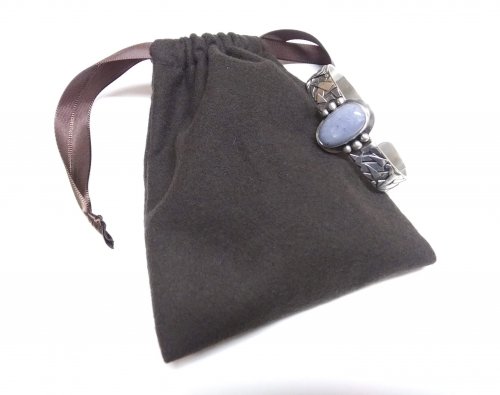 Anti-tarnish Silver Cloth Bags
Anti-tarnish Silver Cloth Bags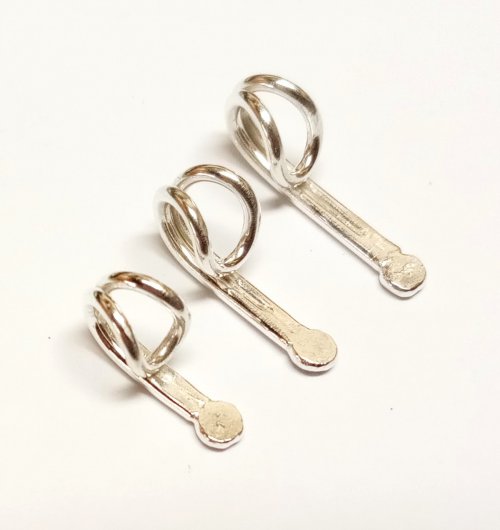 Cotter Pin Style Bail
Cotter Pin Style Bail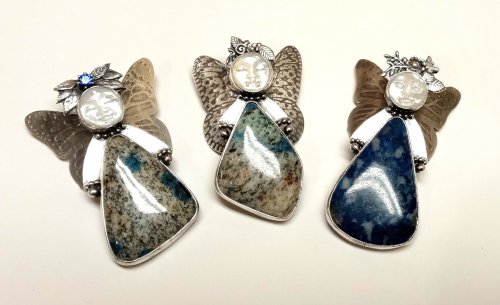 Holiday Woodland Fairy Ornament
Holiday Woodland Fairy Ornament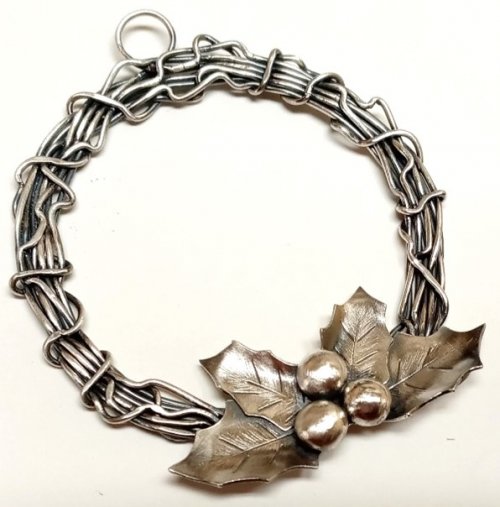 Happy Holly Days Wreath Ornament
Happy Holly Days Wreath Ornament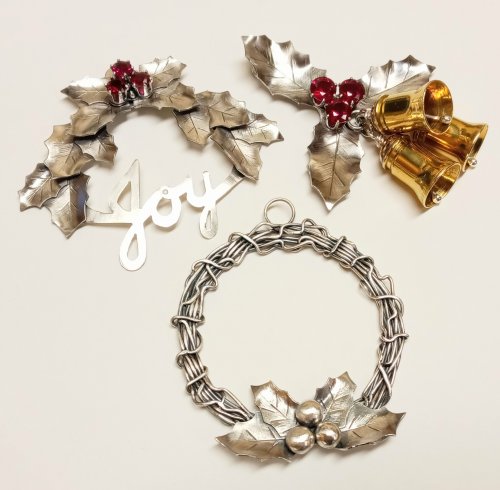 Happy Holly Days Leaves and Berries
Happy Holly Days Leaves and Berries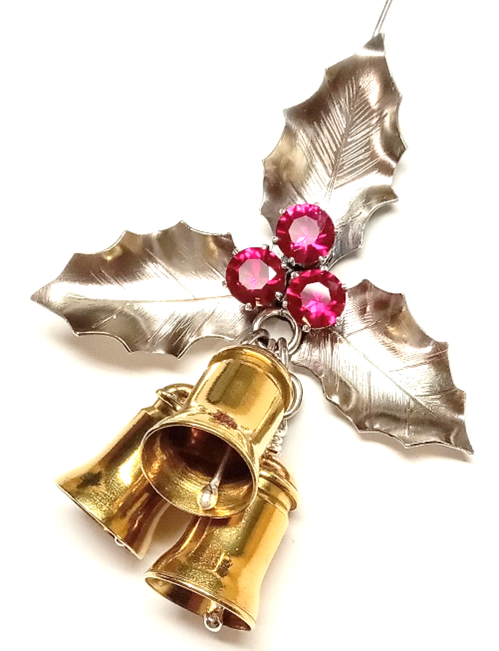 Happy Holly Days Bells Ornament
Happy Holly Days Bells Ornament 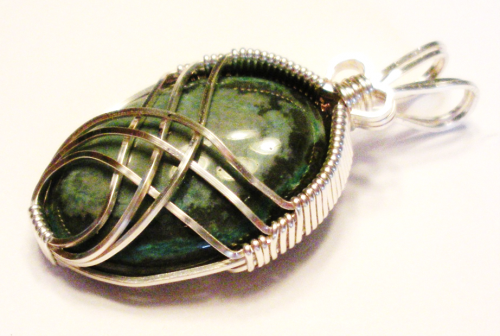 Art Deco Wire Wrapped Pendant
Art Deco Wire Wrapped Pendant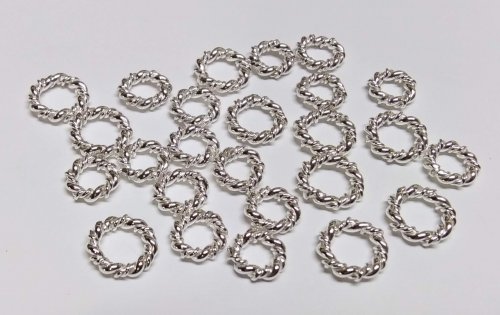 Twisted Wire Jump Rings
Twisted Wire Jump Rings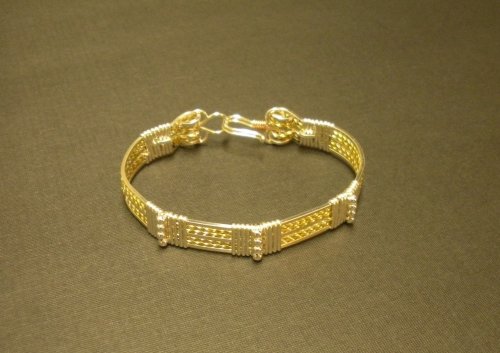 Two-tone Beaded Bangle
Two-tone Beaded Bangle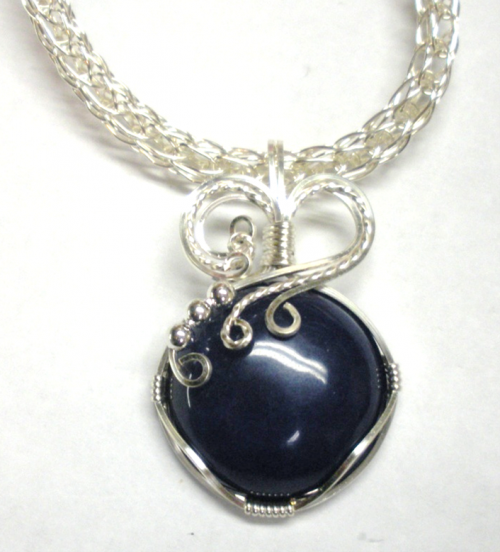 Sweetheart Pendant
Sweetheart Pendant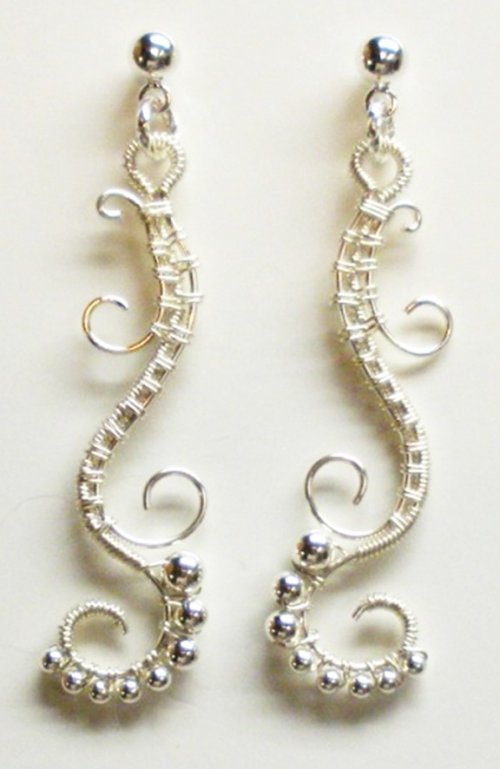 Waves on the Beach Earrings
Waves on the Beach Earrings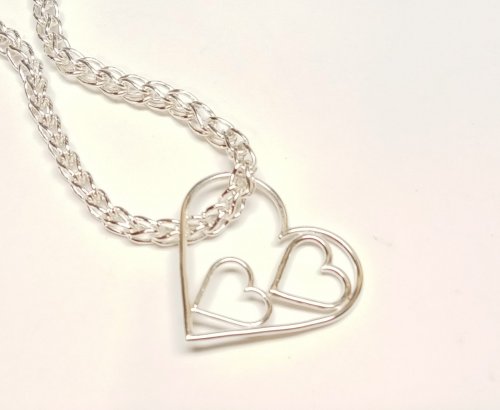 Any Size Wire Hearts - Any Size, Any Gauge
Any Size Wire Hearts - Any Size, Any Gauge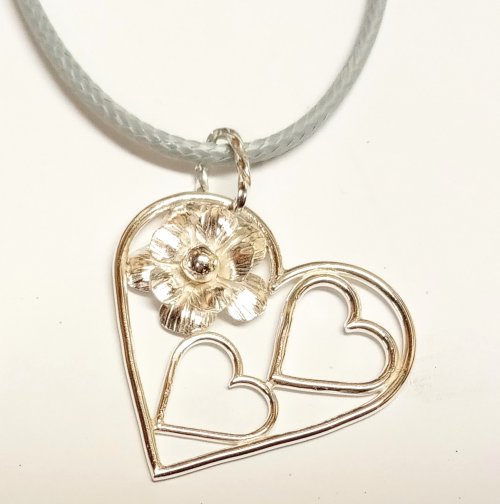 Just in Case Heart Pendant
Just in Case Heart Pendant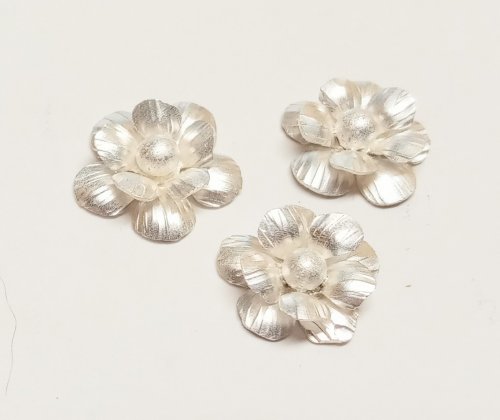 Small Flower Embellishment
Small Flower Embellishment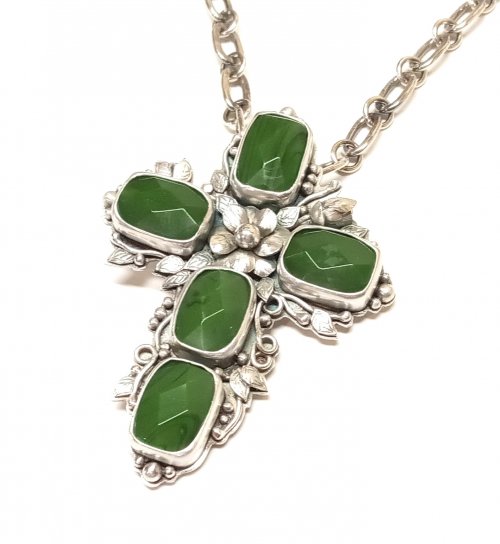 Making Tiny Dapped Metal Leaves
Making Tiny Dapped Metal Leaves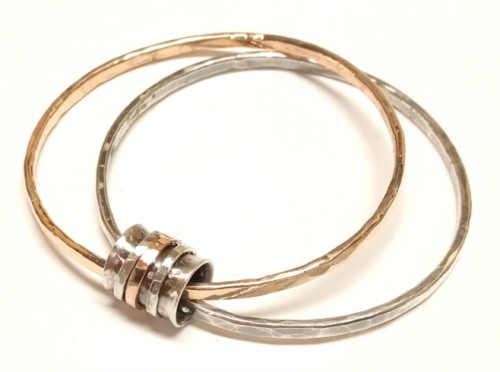 Spinner Fidget Bangles
Spinner Fidget Bangles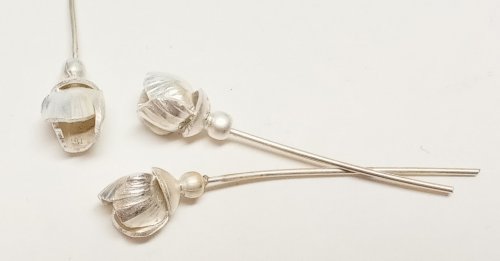 Small Flower Bud Embellishment
Small Flower Bud Embellishment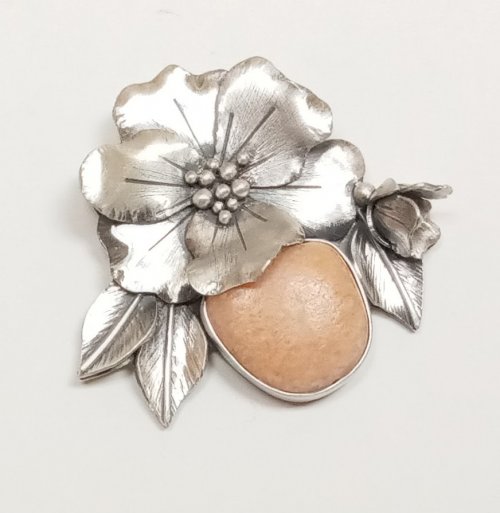 Three Petal Bud and Layered Embellishment
Three Petal Bud and Layered Embellishment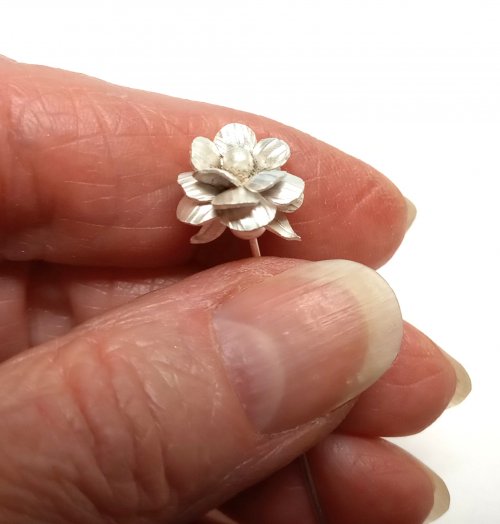 Creating a Flower Stem
Creating a Flower Stem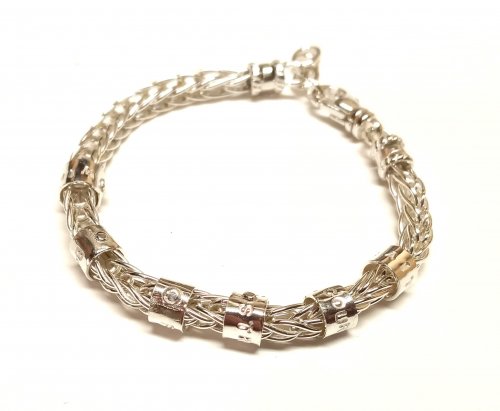 Stamped Tube Beads
Stamped Tube Beads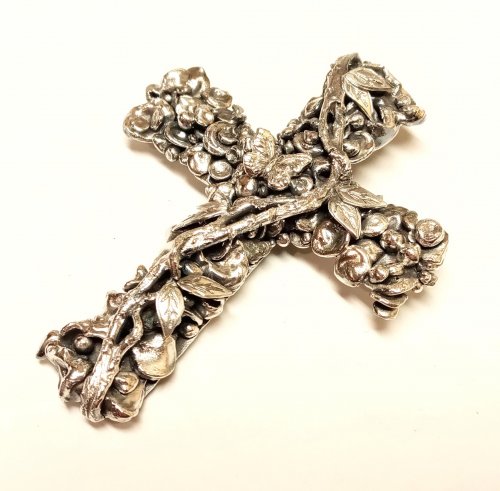 Water Cast Scrap Cross
Water Cast Scrap Cross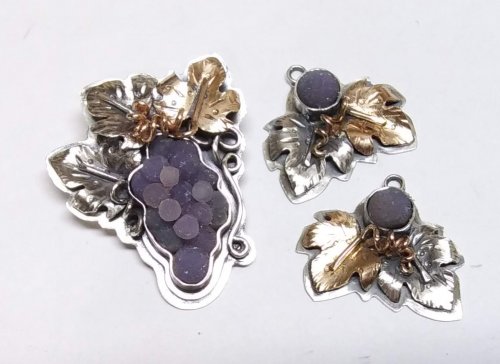 Sugared Grapes Pendant
Sugared Grapes Pendant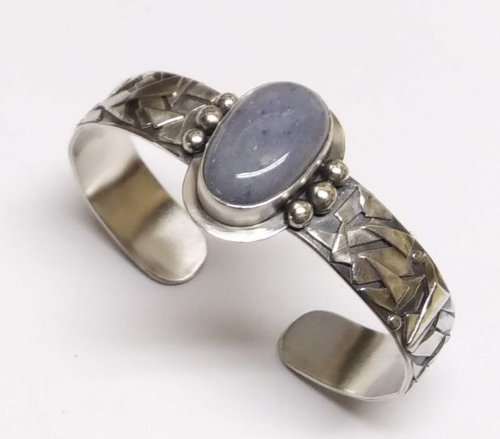 Tourist Rock Cuff Bracelet
Tourist Rock Cuff Bracelet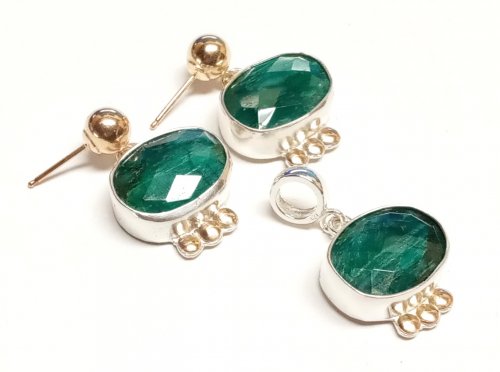 Gemstone Chains Reimagined
Gemstone Chains Reimagined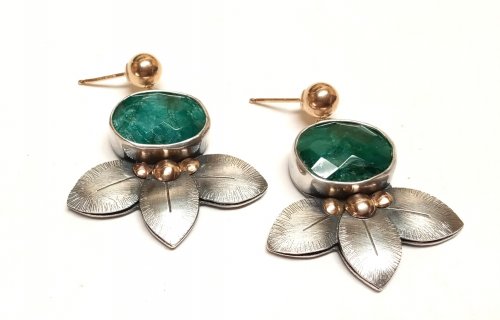 Checkerboard Faceted Earrings
Checkerboard Faceted Earrings Foxtail Chain aka Loop-in-Loop
Foxtail Chain aka Loop-in-Loop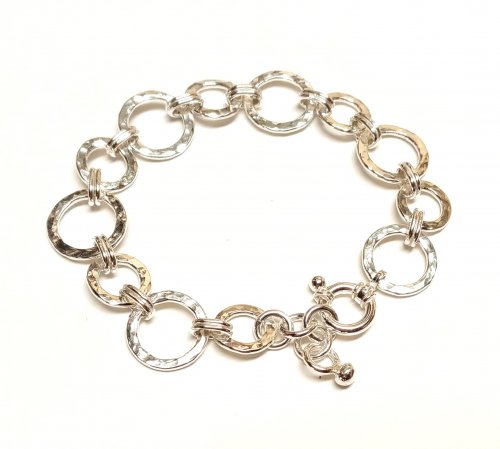 Handmade Chunky Chain
Handmade Chunky Chain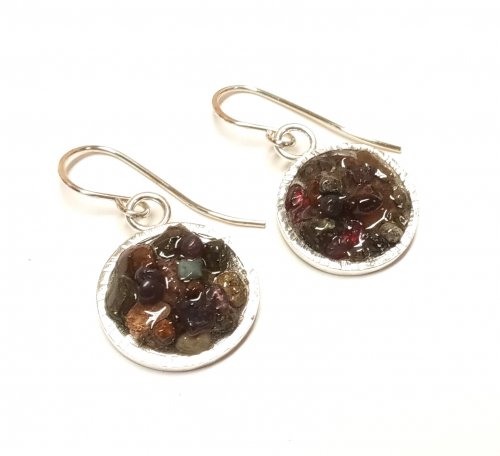 Capture a Summer Memory
Capture a Summer Memory Stone Key Fob
Stone Key Fob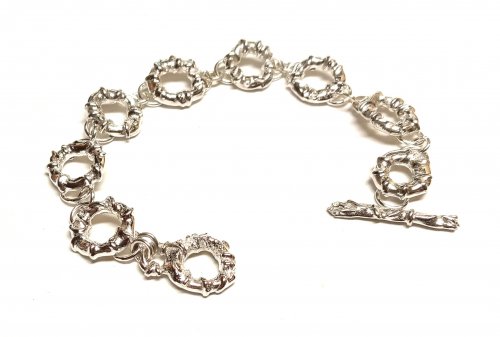 Sprinkles Link
Sprinkles Link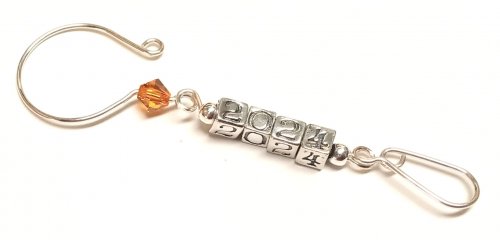 Handmade Ornament Hooks
Handmade Ornament Hooks
